Squirrel Signs and Damage in Westminster Attic
A homeowner in Westminster was experiencing scratching sounds early in the morning.
One of the most common squirrel signs people notice is sounds above their ceiling early in the morning. The scampering noises can be loud enough to wake you up and make it difficult to fall asleep. Our first step in an inspection is to hear your concerns. Wherever you’re experiencing a nuisance like sounds or strange odors, that’s where we start. We don’t stop there, though. Our inspection covers the entire house. There’s a reason all of our trucks have ladders on them! From the roof to the crawlspace, we’ll investigate each nook and cranny to find evidence of nuisance wildlife.
Squirrel Damage to the Exterior of the House
During our inspection, we found a suspicious gap above the portico on the front of the house.

Squirrels can be tenacious. They only need a gap the size of a golf ball to squeeze inside your home.
Signs of Squirrel Entry from Inside the Attic
You can spot squirrel entry holes inside the attic by looking for sunlight. They won’t keep to just one entry hole. Squirrels will explore your whole home and find or create several entry gaps. If you miss an entry hole and don’t seal it, your home will remain vulnerable to infestations.
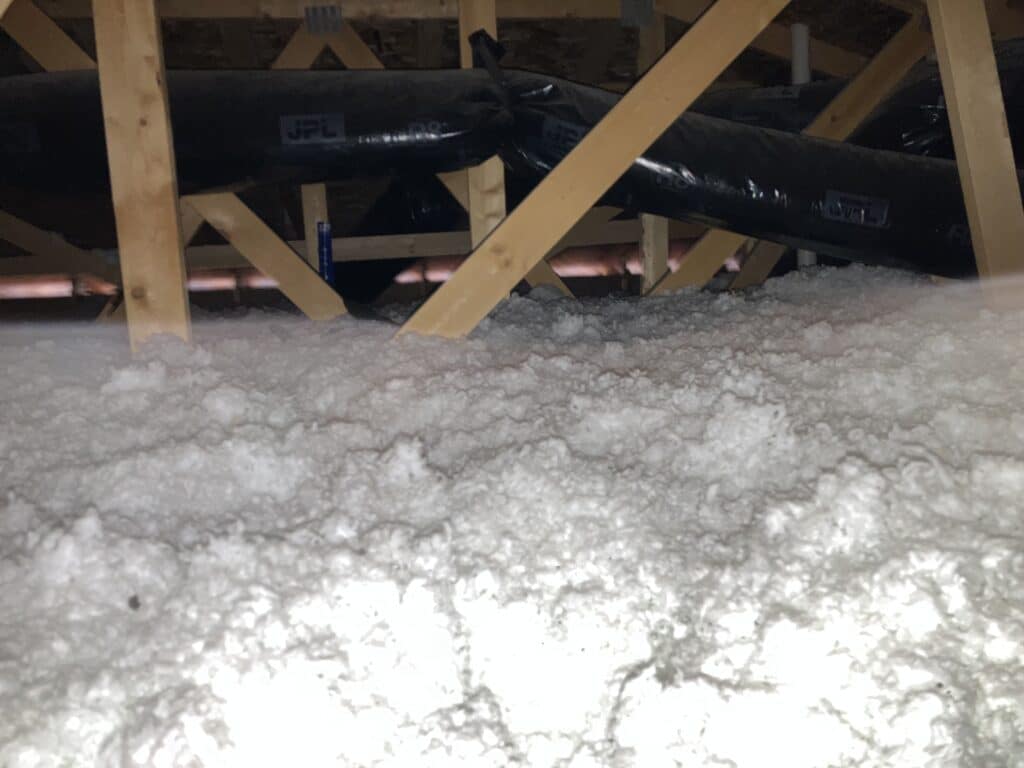
Squirrel Damage to HVAC
Our inspection covers the entire house and property. We identify all the damage caused by the invading critter. This homeowner was experiencing trouble with the HVAC unit.
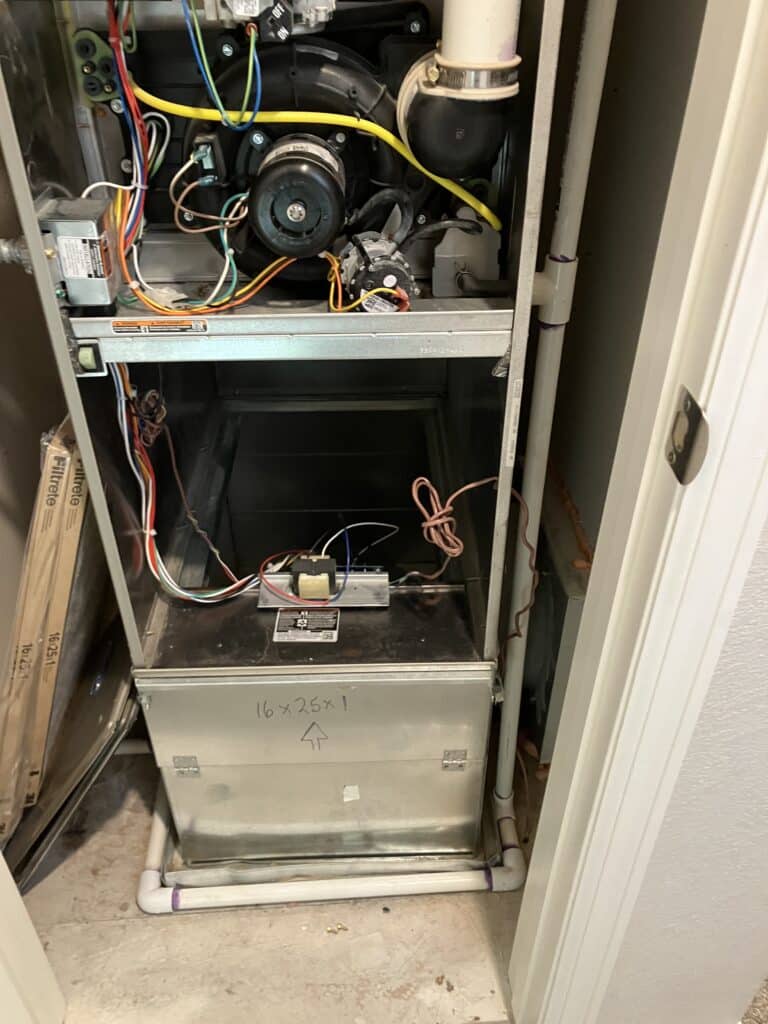
Whole Home Exclusion for Squirrel Pest Control in Westminster, Colorado
Once squirrels have identified a home as a good place to shelter, they’ll return to access it again. We found evidence of squirrel entry spots along the roof eaves, but the roof vents were vulnerable, too. Uncovered roof vents and plumbing stacks are common entry spots for squirrels and raccoons, rats, and bats. Our exclusion services protect your home from all types of nuisance wildlife.

A local power plant in Seattle was having problems with pigeons. Pigeons can be quite a problem for anyone, especially those who have to battle them roosting in a building they are trying to work in. They can be destructive, bringing in toxic spores that thrive in their droppings.
Pigeon Problems
The pigeons were roosting in the rafters of the plant. While seemingly benign they were causing problems to the building and for the employees, which included:
- Health risks: Pigeon droppings can harbor a host of pathogens that can pose a threat to human health. They can carry various diseases, such as histoplasmosis, cryptococcosis, and psittacosis, which may be transmitted to people via contact with contaminated surfaces or inhaling airborne particles.
- Structural damage: Accumulated pigeon droppings can corrode commercial buildings, slowly destroying materials like metal, wood, and stone. This compromises the building’s structural integrity and can open the door to water damage and issues with mold, mildew, and rot.
Bird Netting for Pigeon Control
We installed bird netting under the roof to keep the pigeons from roosting. It took 2.5 days, three lifts, and almost a whole Seattle Critter Control team to net a couple of their outbuildings against some pesky pigeons!
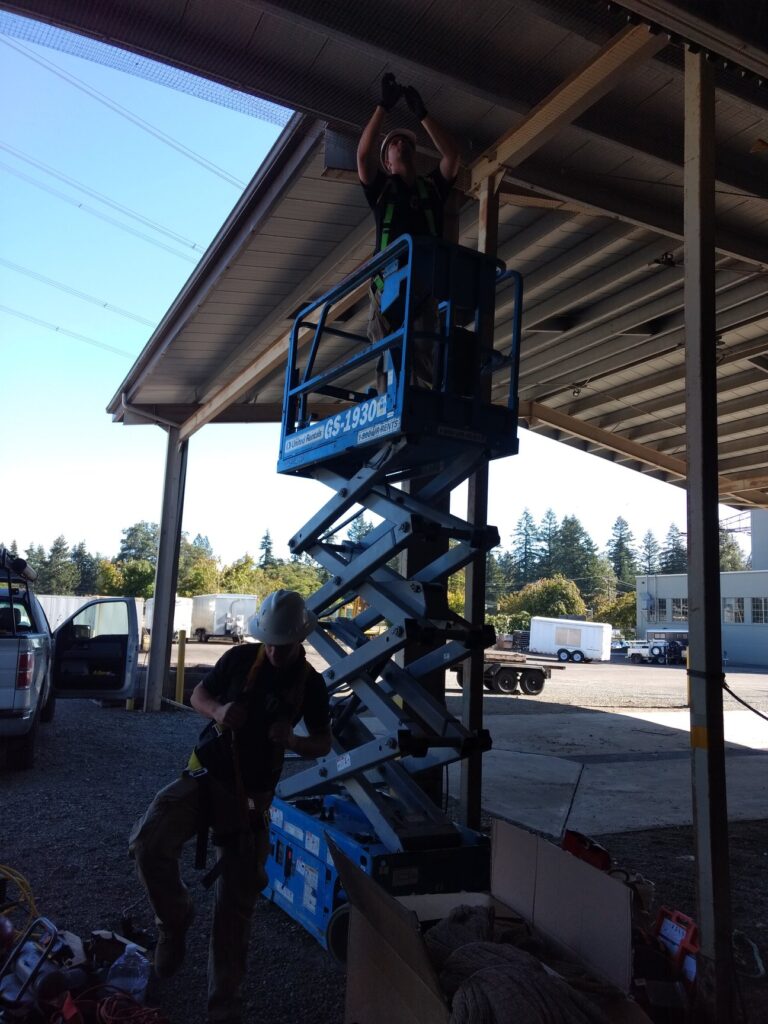


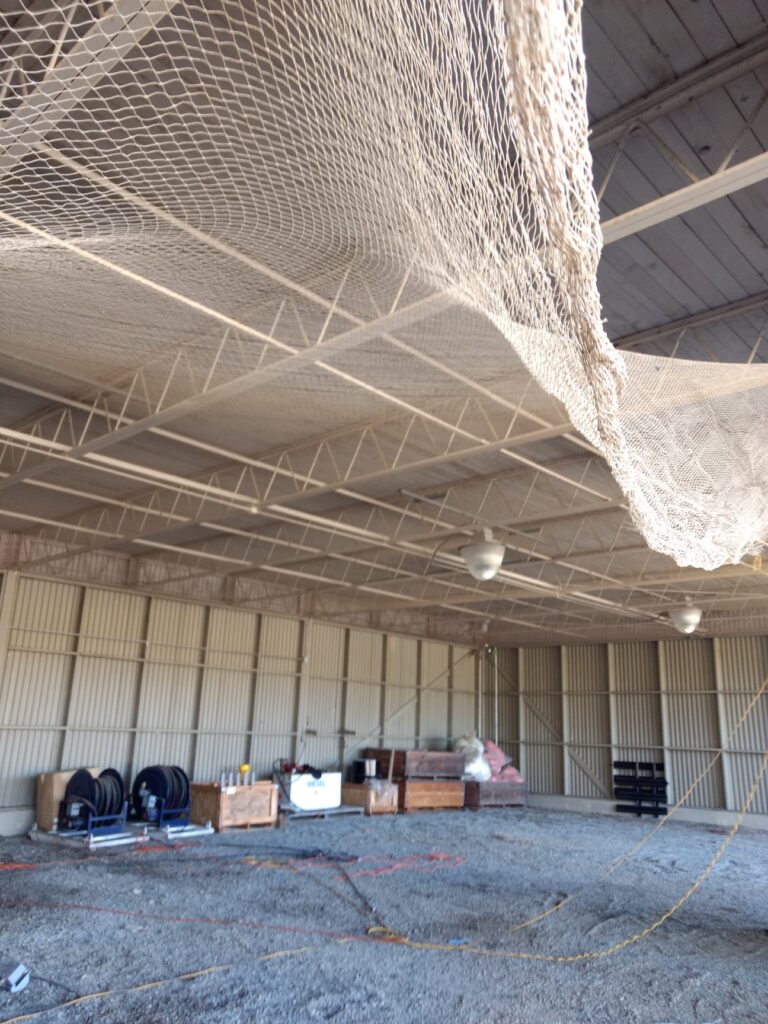
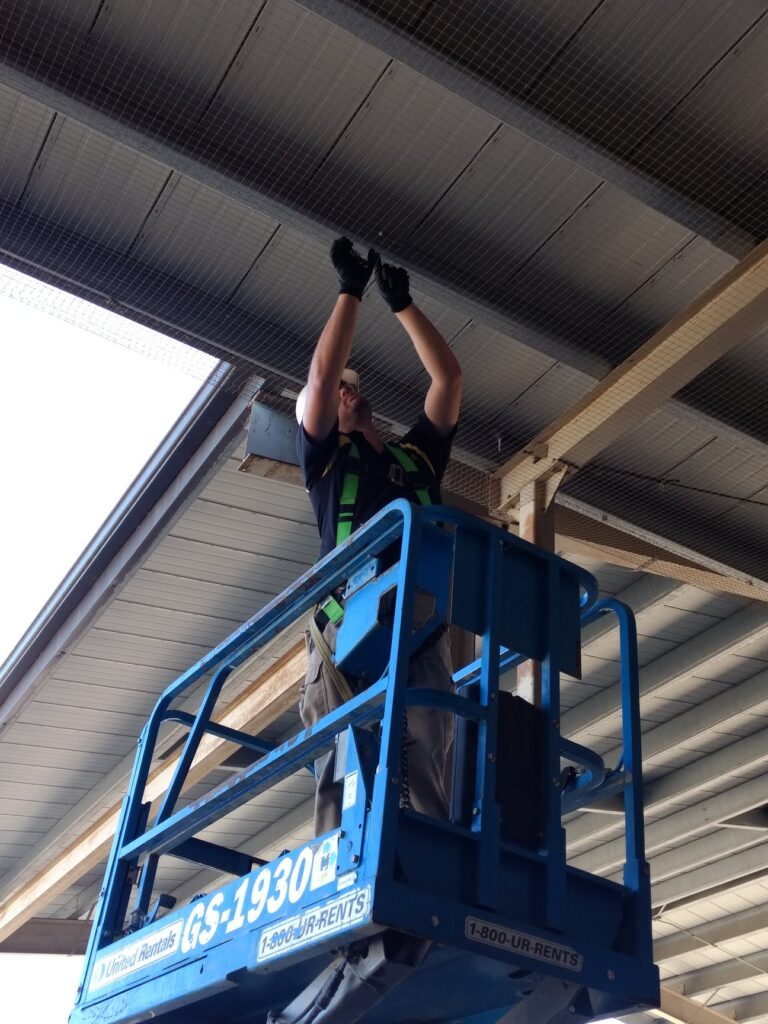
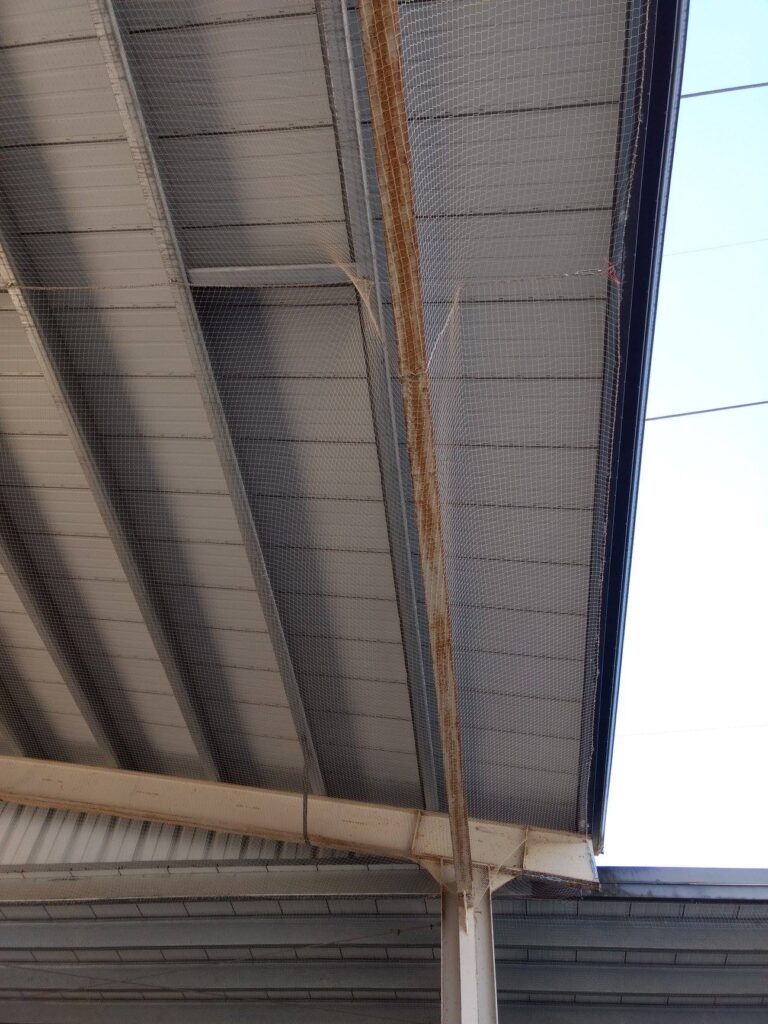
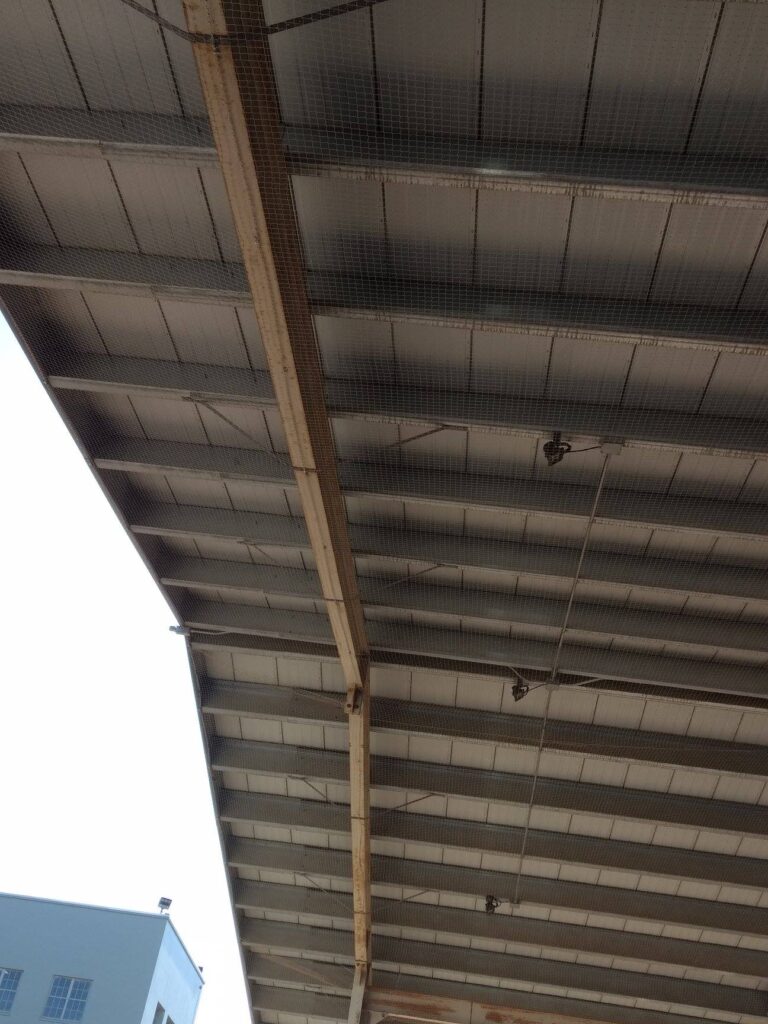
Understanding the Value of Pigeon Control Maintenance
While resolving a pigeon infestation is an integral first step in keeping these birds at bay, it’s only part of a long-term solution. Ongoing maintenance is equally essential in preventing them from returning and causing the same problems.
At Critter Control, we design a comprehensive maintenance plan tailored to your needs. From regular inspections to deterrent installations, we’re here to help you keep pigeon populations under control. Pigeons have a strong homing sense, so control isn’t a one-and-done situation. Ongoing maintenance is often necessary to ensure the birds don’t become a recurring problem.
Spokane, Washington, is a thriving city located in the eastern part of the state near the border of Idaho. Ranked no. 19 among the fastest-growing places, Spokane has received accolades for its recent growth and vibrant downtown restaurants, performance venues, breweries, and wineries. The Spokane River runs right through the downtown area and is flanked by Riverfront Park, offering residents and tourists entertainment, along with an outdoor venue for biking, walking, and hanging out.
With plenty of incorporated green spaces, Spokane has access to numerous lakes and mountains nearby. The city is surrounded by smaller communities with residents who commute to the city for work, serviced by I-90 and several smaller routes that intersect the region. Spokane’s motto, “Near Nature, Near Perfect,” expresses its allure for people and businesses, but it also holds for wildlife.
It’s hard for any city to grow without disturbing the habitats of the wildlife around it, and Spokane is no exception. While its surrounding landscapes range from basalt columns to mountain lakes perfect for wildlife, these places have become destinations for residents and tourists looking for outdoor recreation. Wildlife adapts to these intrusions by likewise adapting to our habitats, learning that urban and suburban life provides them with easy access to food, water, and shelter.
There are some suggestions that the squirrel population in Dallas–Fort Worth is booming. Oak trees in and around DFW are the ideal tree for squirrels. The acorn provide the perfect diet for squirrels, and the large branches create plenty of places to build a nest. Brett Johnson, an urban biologist for Dallas Park and Recreation, speculated as we have planted more trees squirrels were able to thrive in the city (source).
The most common pest squirrel in Dallas is the Eastern gray squirrel.
Types of Squirrels in Dallas-Fort Worth
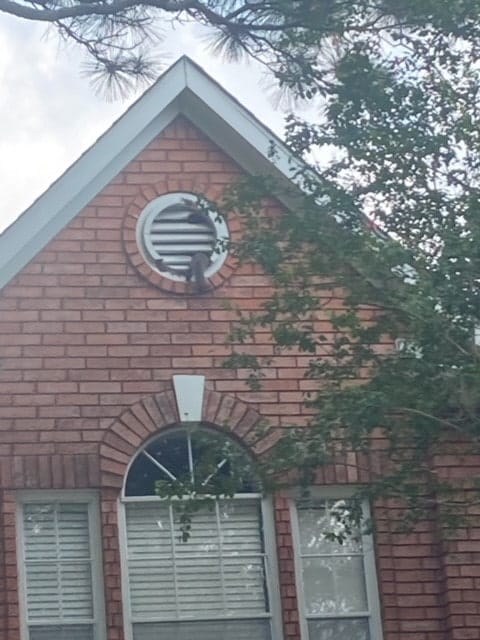
Tree Squirrels
In Dallas, the Eastern gray squirrel (Sciurus carolinensis) and the Eastern fox squirrel (Sciurus niger) are the two most common tree squirrels. Both species thrive in urban, suburban, and wooded areas, often nesting in tree cavities or attics. The fox squirrel is larger and more reddish-brown, while the gray squirrel is smaller and gray with a bushy tail. Their strong hind legs make them excellent climbers and jumpers, which is why they frequently access rooftops and chimneys.
Flying Squirrels
The Southern flying squirrel (Glaucomys volans) is the only flying squirrel species native to North Texas, including Dallas. Unlike tree squirrels, these nocturnal squirrels are rarely seen during the day. They glide from tree to tree using a special membrane between their legs. Homeowners often first notice them when they hear scratching or movement sounds in the attic at night.
Ground Squirrels
While tree squirrels dominate urban Dallas, ground squirrels are also found in Texas, especially in more rural or open areas. The thirteen-lined ground squirrel (Ictidomys tridecemlineatus) is the most common in North Texas. These squirrels live in burrows underground and are active during the day. Their strong claws help them dig extensive tunnels, though they are less likely to invade homes compared to tree or flying squirrels.
Squirrel Problems in Dallas-Fort Worth
The increasing squirrel population with a reduce predator population leads to human-wildlife conflict. This often happens when squirrels build nests (dreys) in your home.
Where Do Squirrels Live in DFW Homes?
Tree squirrels enter homes looking for shelter. Some types of squirrels can give birth to two litters in a year. During their breeding period, female squirrels can build nests (dreys) in attics or wall cavities. Homeowners typically notice these litters during late spring/summer and autumn.
In the winter, they are likely to invade homes and other structures to ride out the harsh winter months. Because they do not hibernate, squirrels build caches of nuts to eat. It’s not uncommon to find squirrel caches inside your home after the cold weather.
- Attics. Squirrels are well known for nesting in attics, as they provide a safe hideaway for squirrels to raise their young. The inside of an attic is also full of things for them to nibble and sharpen their ever-growing teeth on, like wood and insulation. This can create problems—when a squirrel chews the insulation on electrical wiring, for instance, the likelihood of a house fire increases.
- Gutters. Squirrels often choose gutters as nesting sites because they make a good foundation for a nest, and provide ample protection from predators—or at least those without wings. Of course, this superior nesting position comes at a cost—to the homeowner. Squirrel nests in gutters impede water drainage, cause water to back up and spill over onto siding, which can result in water damage over time.
- Ceilings/Wall Voids. Wall voids are, as it happens, a near-perfect location for mother squirrels to nest and raise their young. They are dark, rather warm, and removed from both predators and humans alike.
Squirrel Problems in Dallas-Fort Worth Metroplex
Most of the time, squirrels climbing through your trees are not a problem. Squirrels become problematic when they nest inside your house or on your roof. Squirrels damage your home and spread disease.
Squirrels can get into any style of home in any condition. Their sharp incisors can gnaw through most construction materials, and they only need a 1.5-inch gap, about the size of a golf ball.
How Do Squirrels Damage Attics?
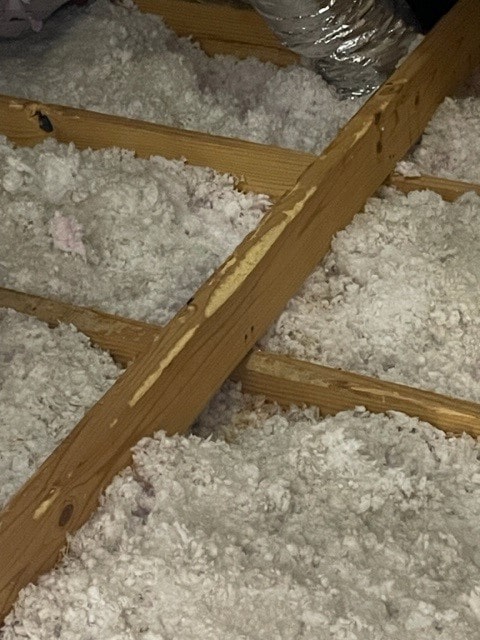
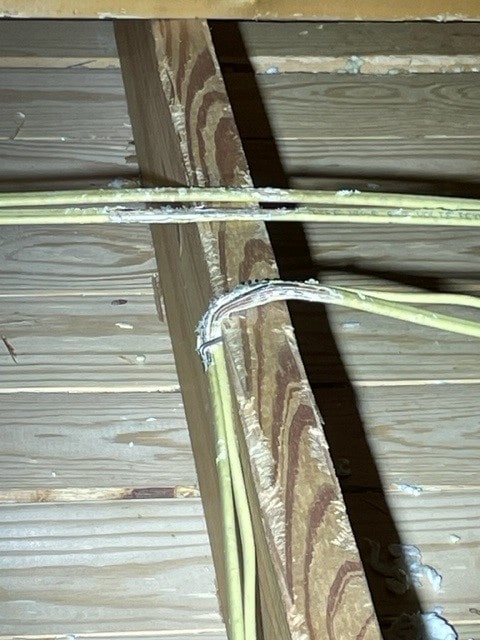
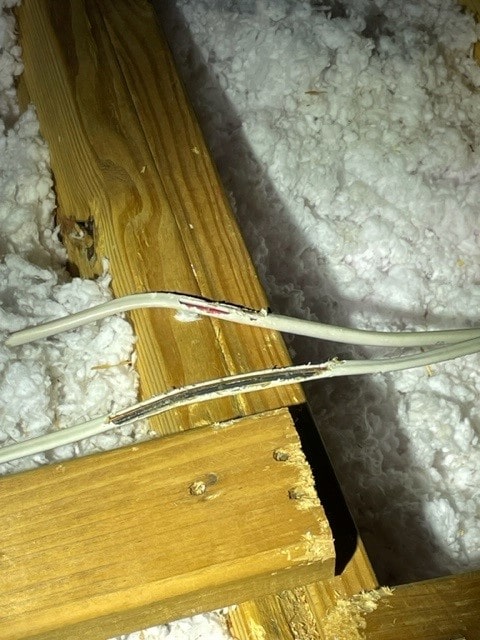
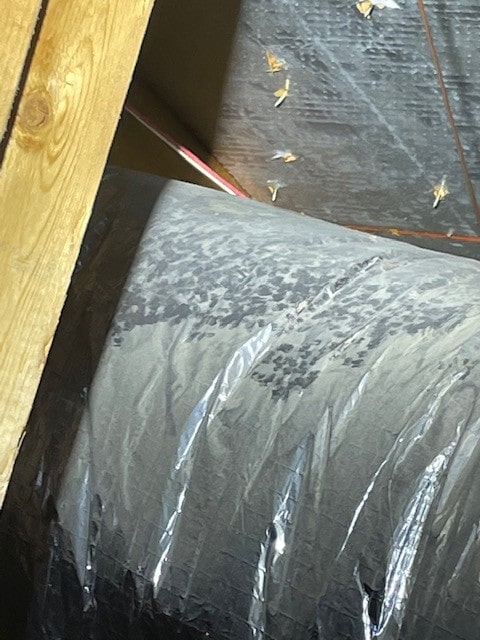
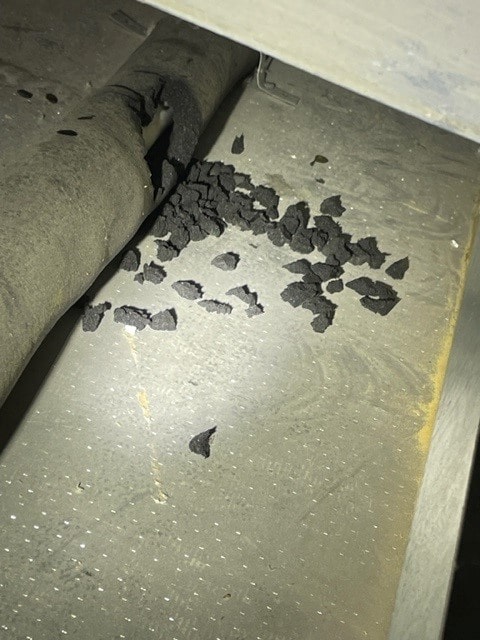
Squirrels are always looking for sheltered areas to build nests for their litter. They gain access to attics by chewing holes above gutters or at construction gaps where dormers meet the roofline. Squirrels will also chew corners of trim or any weak area that gives them access to a shelter.
Nest Building. When squirrels take up residence in an attic, their first order of business is to build a nest—and they have no reservations about using your boxes and papers to do so. They commonly use bits of cardboard and paper as nesting material, which can create a rather distressing mess, especially if the items destroyed were of any importance.
Electrical Wire. Squirrels are old pros when it comes to meddling with human electronics (astoundingly, it has been shown that squirrels cause more damage to critical infrastructure than cyber attacks). One of the most dangerous habits of squirrels is their tendency to gnaw on electrical wiring since a frayed or broken wire in an attic full of wood and insulation increases the risk of a fire considerably.
Insulation Damage. Squirrels damage insulation by both using it to build nests, and by using it as a lavatory. As one might expect, this soiled insulation does not smell good and will need to be replaced.
How Do Squirrels Damage Your Walls?
In addition to nesting in attics, squirrels will often set up shop inside the voids of walls. Wall voids are dark, warm, and (hopefully) uninhabited by humans—the perfect place for a mother squirrel to raise her young.
Unfortunately, squirrels do the same damage in walls that they do in attics—gnawing on both wood and wires, building nests, etc.
Squirrels don’t always seek out a wall cavity. There are some materials like drywall squirrels cannot climb up. Baby squirrels can also get stuck inside a wall. If you hear frantic noises, call an expert immediately. You’ll need to remove the squirrels before they die.
How Can Squirrels Damage Your Roof?
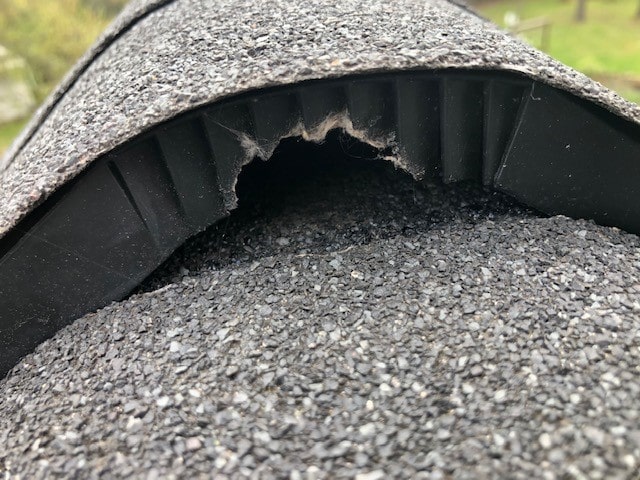
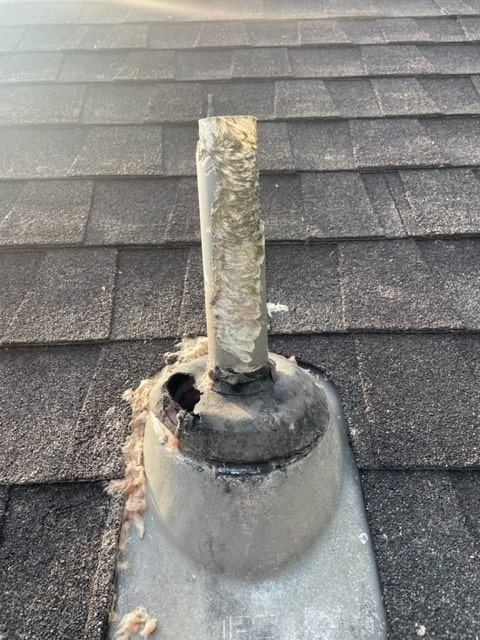
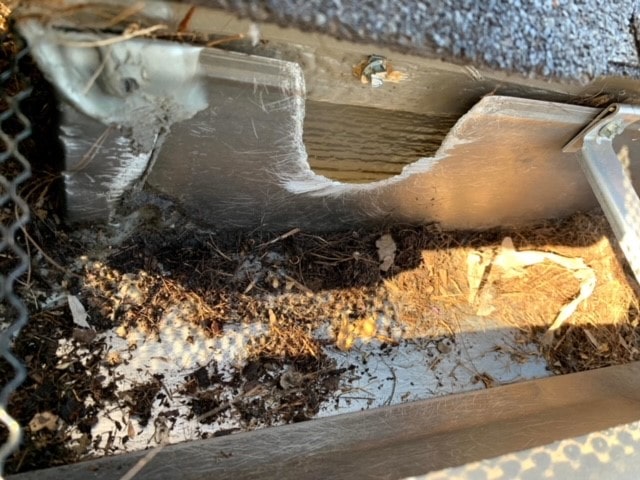
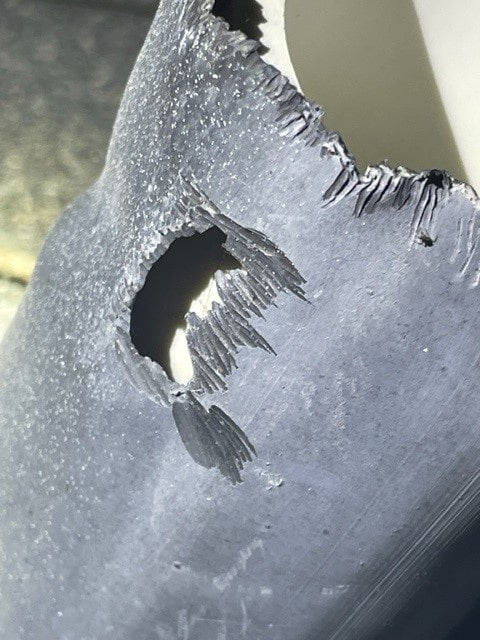

Squirrels navigate their way through treetops seamlessly, so the pests have no problem climbing onto roofs or into soffits. Chock full of vents and joints, the roof is perhaps the most vulnerable area of the house to animals who want in. They can damage roofs by doing the following:
Gnawing. Most damage done by squirrels is a result of gnawing. Squirrels tend to focus on the roofline of homes—fascia boards, eaves, and soffits. Soffit vents are particularly vulnerable because they are often flimsy and lead directly to the attic. Squirrels’ razor-sharp teeth can even pierce shingles, which all too easily leads to water intrusion.
Nesting in Gutters. Squirrels are known to construct nests in gutters. This can impede drainage, causing water to back up and spill over onto siding, which can result in water damage over time.
Damaging Vents. Modern homes are full of appliances, many of which require vents to function properly. In their efforts to get into your home, squirrels can wreck appliance vents, further compromising your home’s barrier against wildlife.
Diseases Squirrels Carry
Squirrel damage is limited to the physical damage to your house. Squirrels in your house also introduce health risks. Some of the more common squirrel diseases include tularemia, typhus, plague, and ringworm. Other diseases squirrels transmit to humans come from the various parasites they carry. Rife with parasites such as fleas, ticks, and mites, squirrels living near homes frequently pass these tiny pests on tohumans and pets. Some diseases humans can get from the parasites include Lyme disease, Encephalitis, and Rocky Mountain spotted fever.
Squirrel Prevention and Control
Once a squirrel population has established itself, deterrents and repellents will not work! The best DIY squirrel control is prevention.
- Limiting food sources is one of the best ways to prevent a squirrel problem. Bird feeders consistently attract squirrels to your yard.
- Securing any gaps along your roof line, roof vents, or fascia boards can keep flying squirrels and tree squirrels out of your house.
How We Take Care of Squirrel Problems in Dallas-Fort Worth
Our process safely removes the squirrels, repairs the damage, and restores the area. The safest way to get rid of a squirrel is either a cage trap or a one way door. Our squirrel exclusion repair provides the best squirrel control. Our barriers are designed to stop squirrels from gnawing their way back inside. Our attic remediation process restores your home before you had a squirrel problem. It starts with removing squirrel nests, droppings, and food caches. Damaged and soiled insulation is removed. The new insulation will improve the energy efficiency of your home, dampen sounds, and provide pest protection. After our exclusion work, squirrels can be released harmlessly back into the wild.
Squirrels can be very persistent. They are rodents, and they constantly need to chew in order to keep their teeth trimmed. Squirrels can chew through materials like wood, aluminum, plastic, and drywall. For this reason, it is important to maintain a squirrel-free home even after properly sealing a property. For a guaranteed, peace of mind solution, speak with a Trutech Wildlife Professional today.
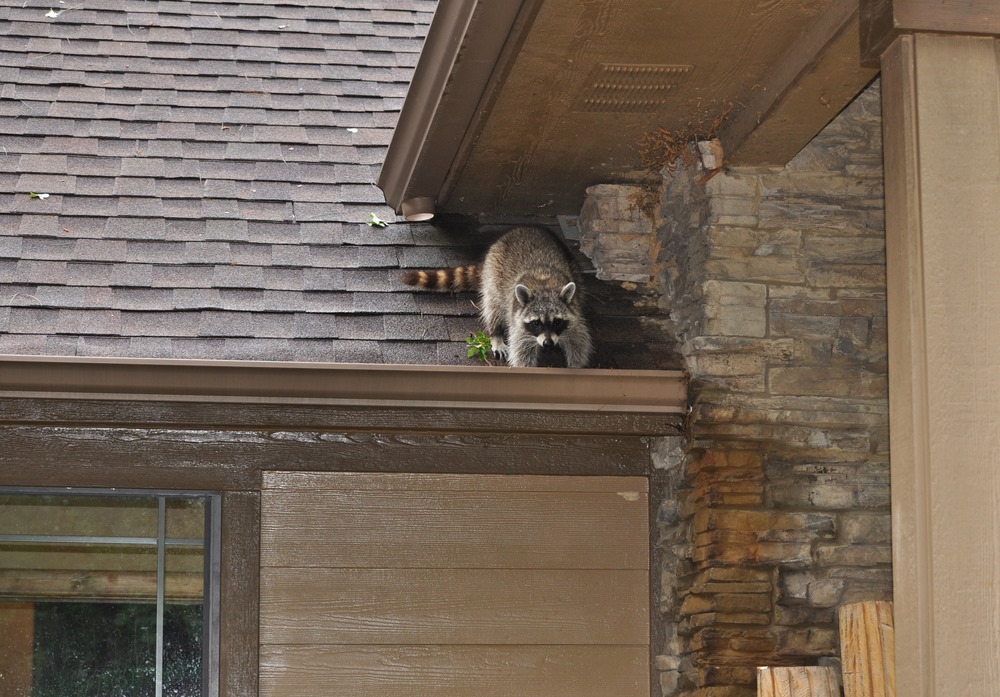
Raccoons are a problem year round in Dallas, TX. There are seasons when raccoon activity increases. During the fall and winter raccoons prepare for winter by seeking out shelter and food sources. We find them in attics and chimneys. Raccoons give birth in early spring; April and May are the peak months. Female raccoons will look for a safe place to create a den in January and February. They will stay in the den until the juveniles are big enough (usually 60 days).
Damage Raccoons Cause in the Attic
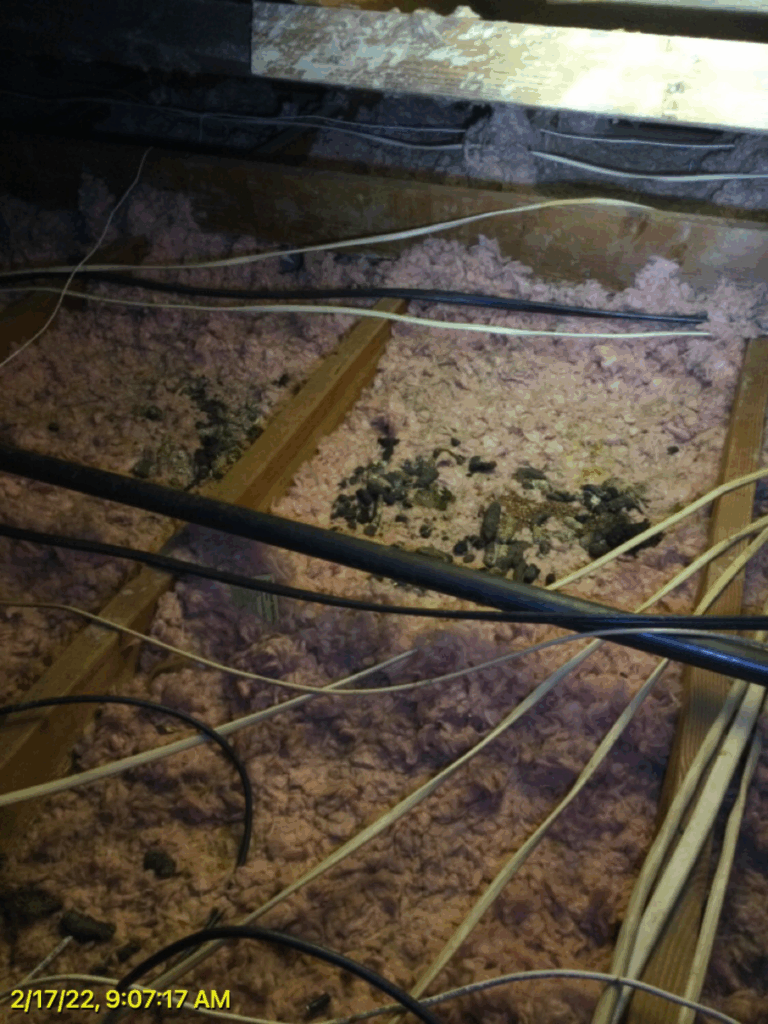
When raccoons get into your attic, further structural damage happens. Raccoons may chew and claw through wooden beams, insulation, electrical wires, pipes, ductwork and other structural components, potentially causing serious damage to the attic and your home’s infrastructure. But perhaps the most worrisome damage raccoons cause is to electrical wires. These frayed wires represent a significant fire risk. Raccoon damage often has a deleterious effect on home value, and homes that have been ravaged by raccoons will likely be harder to sell or rent out.
Raccoon Damage to Insulation
Raccoons in the attic destroy your insulation. Their movements, droppings, and nests will damage insulation in the attic.
As they move around through the attic, the create runways through the insulation degrading its efficiency.
When they den in attics, raccoons create separate latrine sites. Their accumulated feces and urine quickly destroy insulation and saturate woodwork. Their feces spread raccoon roundworm, which is a serious health hazard for residents repairing raccoon damage to homes. In addition, fleas and ticks in raccoon fur can transfer to people or pets.
Female raccoons will build nests in your attic. They often tear open the insulation in that attic to build nests. This decreases the thermal efficiency of your home and may result in higher heat bills.
Most Common Signs of a Raccoon Problem in Dallas
Raccoons are nocturnal and generally stay away from people. So people usually don’t spot a raccoon crawling through their attic.
This homeowner was hearing things go bump in the night. Some raccoons can weigh as much as 20 pounds, so at they travel around in your attic, you will hear them.
Signs of Raccoons in the Attic
- Loud noises, especially at night
- Raccoon feces
- Musty, ammonia-like odor
- Visible tracks or pawprints
- Damaged or torn insulation
- Nesting materials in corner or near HVAC systems
- Damages to wiring or duct systems
- Stains on ceiling
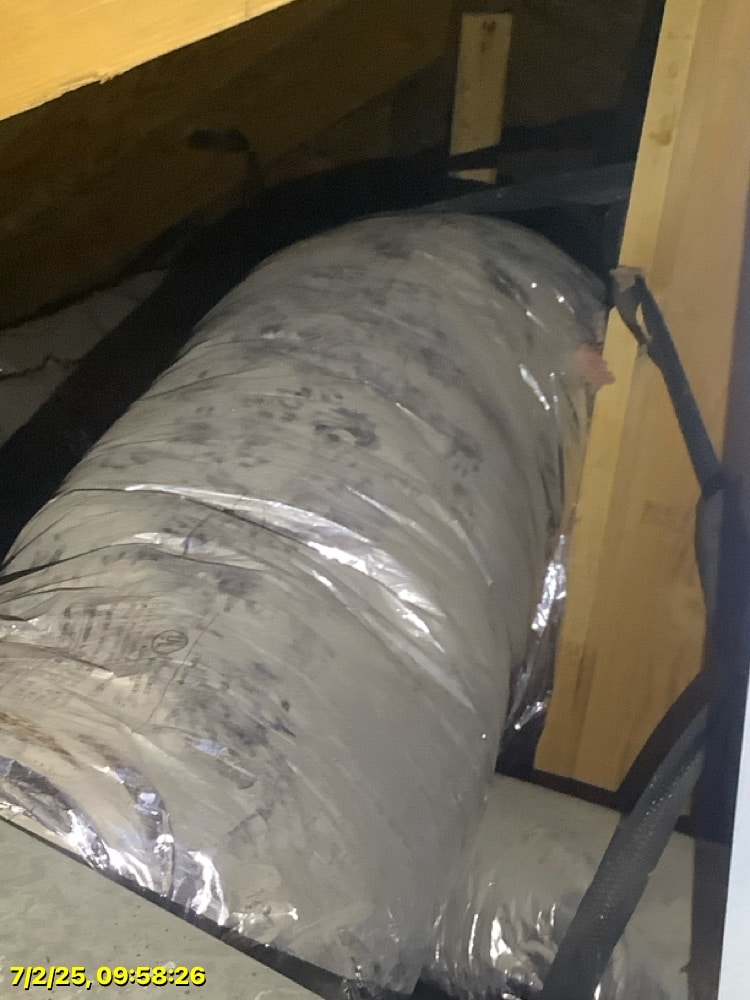
Raccoon Control in Dallas, TX
During our inspection for raccoons in the attic, we found evidence of female raccoon with juveniles. We identified how she was was getting in each day. There were gaps under the soffits under the roof returns. A raccoon only needs a gap the size of a grapefruit. Without a professional home inspection, it can be easy for a homeowner to miss a raccoon entry spot. We also categorized the damaged insulation, positively IDed the raccoon den, and highlighted other areas of damage.
Raccoon Trapping and Removal
We used a cage trap because it is the most effective and humane raccoon removal process in Dallas. Proper placement is essential. It was placed so 12 inches around the trap were clear. Raccoons have extremely dexterous front paws with five long, tapered fingers and long nails. Raccoons destroy everything they can get their hands on when trapped. We set it near the raccoon entry gap near a raccoon run through the insulation. It only took a few days before we successfully caught and removed the raccoon. We removed the juveniles by hand and coordinated with a local wildlife rehabilitator to foster the kits.
Raccoon Exclusion
The most important step for raccoon control is the exclusion work. Exclusions block the entry to your house. It is a chemical-free method that works immediately to keep raccoons out. We sealed the hole and made sure the other soffits were also secure.
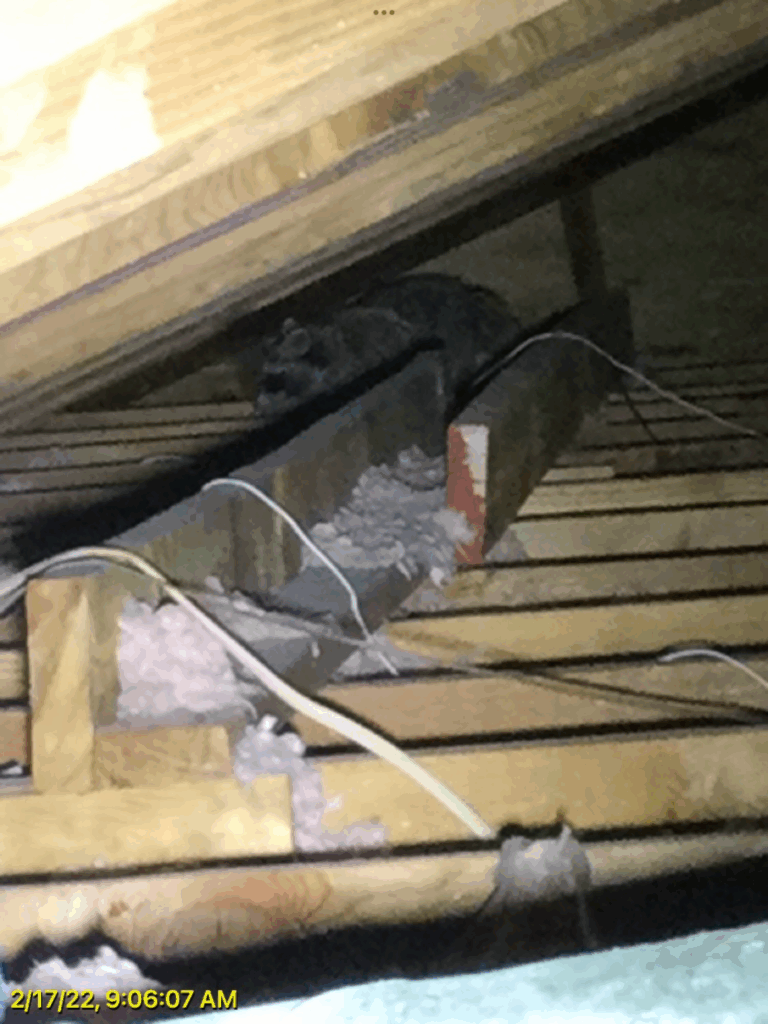
Attic Restoration after Raccoon Infestations
The raccoon family causes significant damage to the insulation. The droppings and urine biologically contaminated increasing the risk to the family to diseases like raccoon roundworm and leptospirosis. The latrine area saturated the insulation causing it to become matted and compressed which decreased the energy efficiency. Finally, the odor. The feces and urine created a strong, ammonia stench to permeate through the attic.
For this homeowner, we provide a full attic restoration and insulation replacement. Not only did we protect the family’s health, but we also help improve the efficiency of their attic with new insulation. Attic restoration after infestation includes removing the hazardous materials, applying sanitizing agents to the affected area, using commercial-grade odor control, and, in some cases, replacing the insulation in the attic.
Attic Cleaning Services after Raccoons
During our cleanup process, we remove the damaged and destroy insulation, any signs of nest materials including outdoor debris, and treat for bugs like ticks and mites.
- Removed raccoon den material
- Remove contaminated insulation
- Applied ectoparasite treatments to exterminate pests like fleas, ticks, mites
Insulation Replacement in Dallas

At Critter Control in Dallas, we offer complete insulation services to help your attic be more energy-efficient and keep your home safe from potential infestations. We take care of every part of the process, including removal and installation. Removing old and damaged insulation is the first and most important step in getting your attic ready for the installation of new material. We safely remove old, contaminated insulation infested with pests, leaving your attic clean, pest-free, and ready for new insulation.
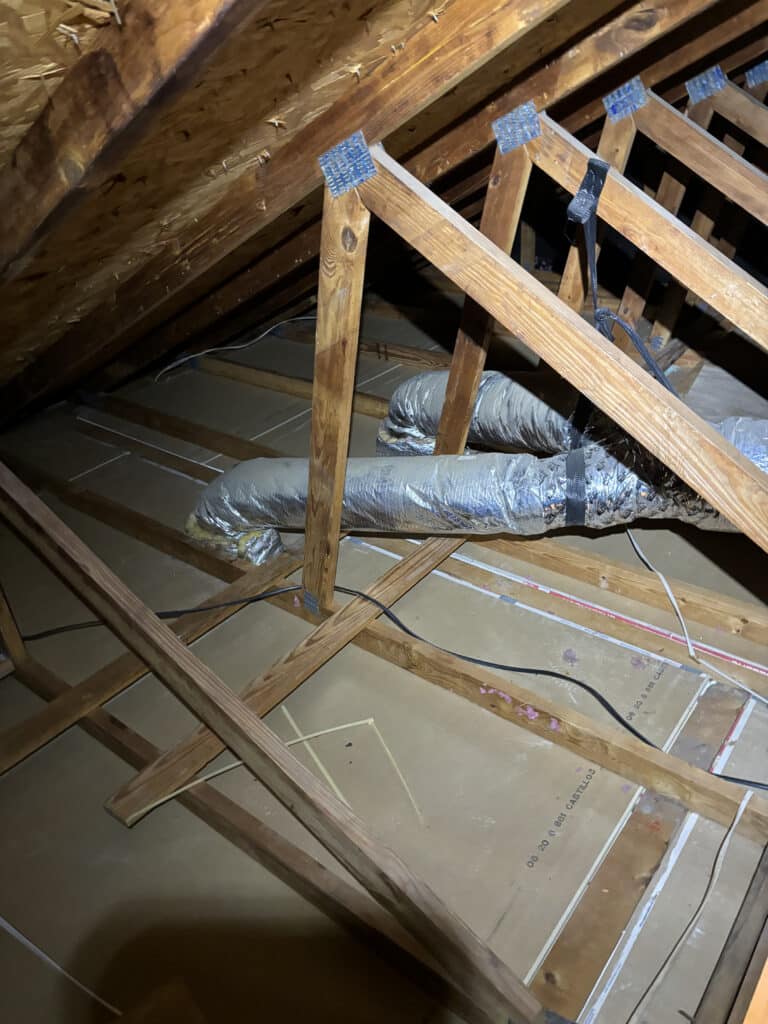
Proper installation is a must for making the most out of your new insulation’s energy efficiency and comfort capabilities. We do blown-in insulation, one of the leading picks for attic insulation, favored for its ability to fill even the tiniest gaps in your attic. How much insulation is enough? Installing the right amount, not too much or too little, is crucial to ensure the right result. Too little insulation leaves your home vulnerable to uncomfortable temperature fluctuations, whereas too much can compromise ventilation and lead to moisture buildup.
Energy Efficient & Pest Control
At Critter Control, we recommend cellulose insulation treated with thermal, acoustical, and pest control (TAP) properties. This multi-functional material offers protection in three ways:
- Thermal protection: This insulation cools your home in the summer and heats it in the winter by preventing the conditioned air your HVAC system pumps from escaping. This, in turn, reduces your energy bills.
- Acoustical benefits: The fluffy layers of insulation help reduce outside noise for a quiet and more peaceful home environment.
- Pest deterrent: TAP insulation is treated with a natural pest control agent that helps prevent infestations, adding an extra layer of protection to your home.
Raccoon Removal and Attic Restoration by Critter Control in Dallas
Raccoon infestations in the attic are more than just a nuisance—they’re a serious threat to your home’s structure, energy efficiency, and your family’s health. From damaged insulation and chewed wires to dangerous latrine sites contaminated with disease-carrying feces, raccoons leave behind a trail of destruction that demands professional attention. At Critter Control Dallas, we provide comprehensive raccoon control services, including humane trapping and removal, expert exclusion to prevent future entry, and full attic restoration. Our team safely removes all contaminated materials, sanitizes and deodorizes affected areas, and installs energy-efficient insulation—ensuring your attic is clean, healthy, and properly sealed. Whether you’re dealing with noises in the night or visible signs of raccoon damage, trust Critter Control to restore your peace of mind and protect your home.
Bees, paper wasps, and hornets often nest in attics, walls, soffits, under eaves and porches, or in tree branches. Others — like yellowjackets and some bee species — prefer to build their nests in the ground.
When these nests are located near entrances, windows, decks, or inside your home, they can pose a real risk. In these cases, removal should always be handled by a professional. We specialize in safely removing all types of stinging insect nests, including those made by wasps, bees, yellow jackets, hornets, and paper wasps.
- Common stinging insects in Knoxville include bees, yellow jackets, wasps, and hornets.
- Infestations can trigger allergic reactions, damage your home, and attract other pests.
- Nests are often found on roofs, in soffits, under porches, or in trees and shrubs.
- Warning signs include stings, eggs, nests, and swarming insects.
- Professional removal is the safest and most effective solution.
Where Do Stinging Insects Nest?
Insects that sting choose nest locations that offer protection and proximity to food sources. These spots are often hidden in plain sight on your home or in your yard.
Structures
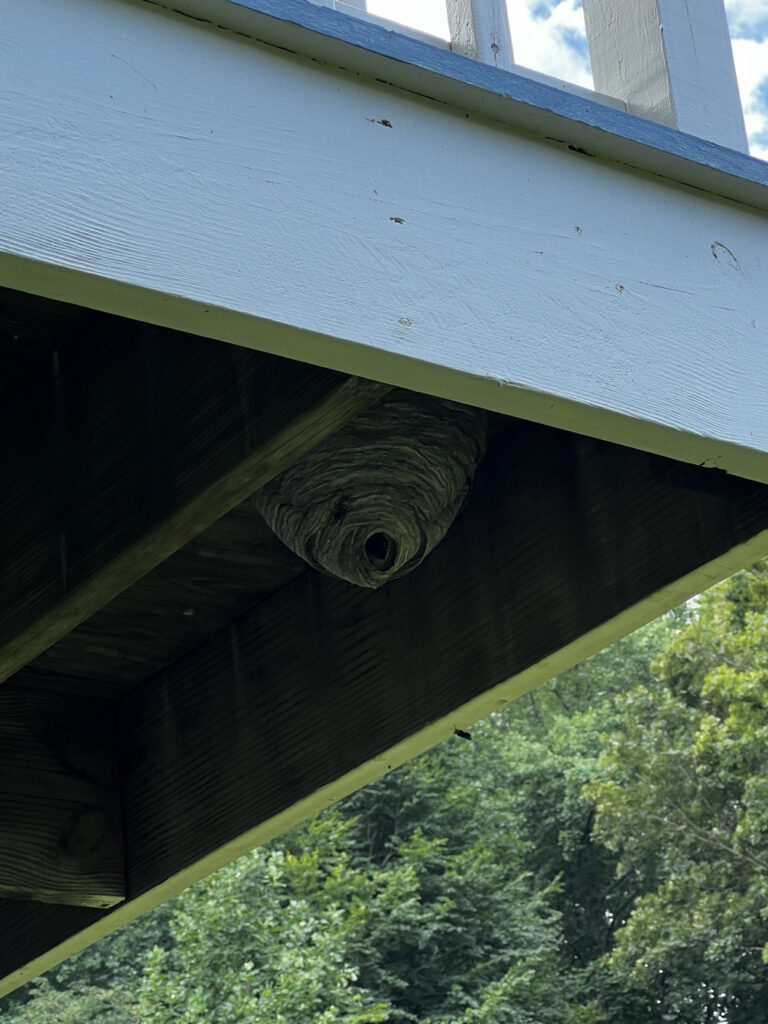
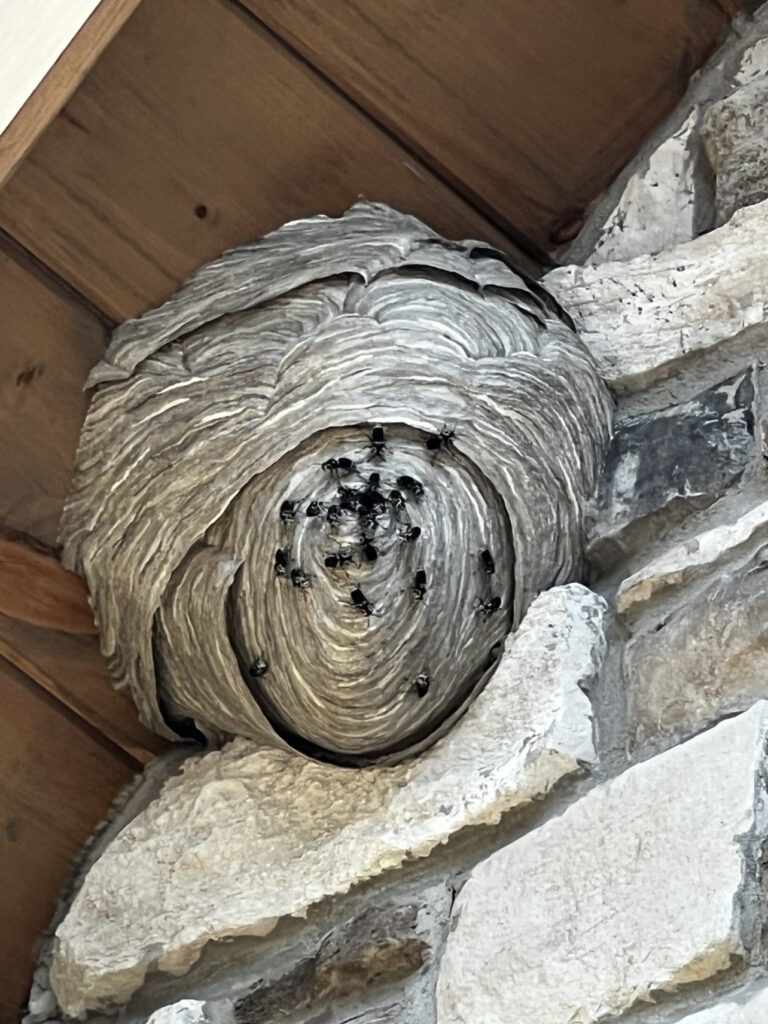
Soffits, those tucked-away areas under your roof’s overhang, are a popular nesting spot on your home since they provide shelter and elevation. Ceilings and roofs, including attics, roof eaves, and crawl spaces, are attractive for the same reasons but also offer warmth, which is especially appealing to bees and wasps.
They may also take up residence under your feet, building their nests under floorboards and porches. These shaded and low-traffic zones are the perfect environment for them to build their nests and grow their colonies unnoticed.
Trees and Shrubs
Tree branches and dense shrubbery offer ideal conditions for hornet and hanging wasp nests. These locations provide camouflage and easy escape routes, making removal particularly tricky.
What Are the Signs of Infestation?
Seeing a stinging insect fly by every now and again isn’t an issue, but when they keep appearing, or you start noticing specific signs, it might point to a growing infestation. Common signs include:
Stings
Frequent stings are the most obvious red flag. If you or your family members are constantly falling victim to stinging insects, it’s time to investigate. This is especially important if anyone in your family is allergic.
Nests
Nests vary based on the species: Bees build waxy hives, while hornets and wasps create papery, football-shaped nests. They might be tucked under eaves, hidden in shrubs, or even inside wall voids.
Eggs
In most cases, you won’t spot the eggs because they are hidden within the nest. Professionals who are trained to recognize early egg-laying activity can help determine whether the colony is growing rapidly.
Swarming
If you see large numbers of flying insects in one area, especially hovering around entry points or trees, there’s a good chance you have a nest nearby. Swarming behavior is particularly common during nesting season.
Why Are Stinging Insects Dangerous?
Stinging insects can pose more than just a physical threat, potentially jeopardizing your family’s health and your home’s safety. The dangers increases when the wasps and bees build their nests and hives close to you. Under porches, next to doors and windows, or buried in the lawn are some of the places that lead to the most stings.
Issues may include:
- Health risks: If anyone in your family has serious allergies, even a single sting could trigger a severe, potentially life-threatening reaction. In cases of an infestation, the chances of being stung multiple times increase significantly.
- Structural damage: Some species, like bees and wasps, build nests inside walls, roofs, and ceilings. Over time, these nests can weaken wood, trap moisture, and lead to mold or rot.
- Secondary infestations: Leftover honey or abandoned nests can attract ants, rodents, and other pests looking for food or shelter, compounding the issue.
Dealing With Stinging Insects? Reach Out to a Professional!
Wondering how to handle stinging insects and evict them from your home? The answer is simple: don’t go it alone.
Most pest control companies avoid dealing with stinging insects due to the risk involved. At Critter Control, we offer hornet nest removal, wasp removal, and bee removal near you. We have the training and tools to remove the stinging insects safely, and we go a step further by repairing any damage they’ve caused to your home.
Whether you need help with bee hive removal, are wondering how to remove a yellow jacket nest, or need full wasp removal near you, you can trust us to get the job done right. Contact us today to evict stinging insects from your home.
Raccoon birthing season always proves challenging. Normally, we can quickly catch the mother on her way out of the house to forage. The kits can be more difficult to capture. The younger kits tend to stay near the den which can be tucked away in the attic or down the walls. It can be impossible for us to reach them. Safely removing the kits usually requires cutting in the soffits or ceilings.
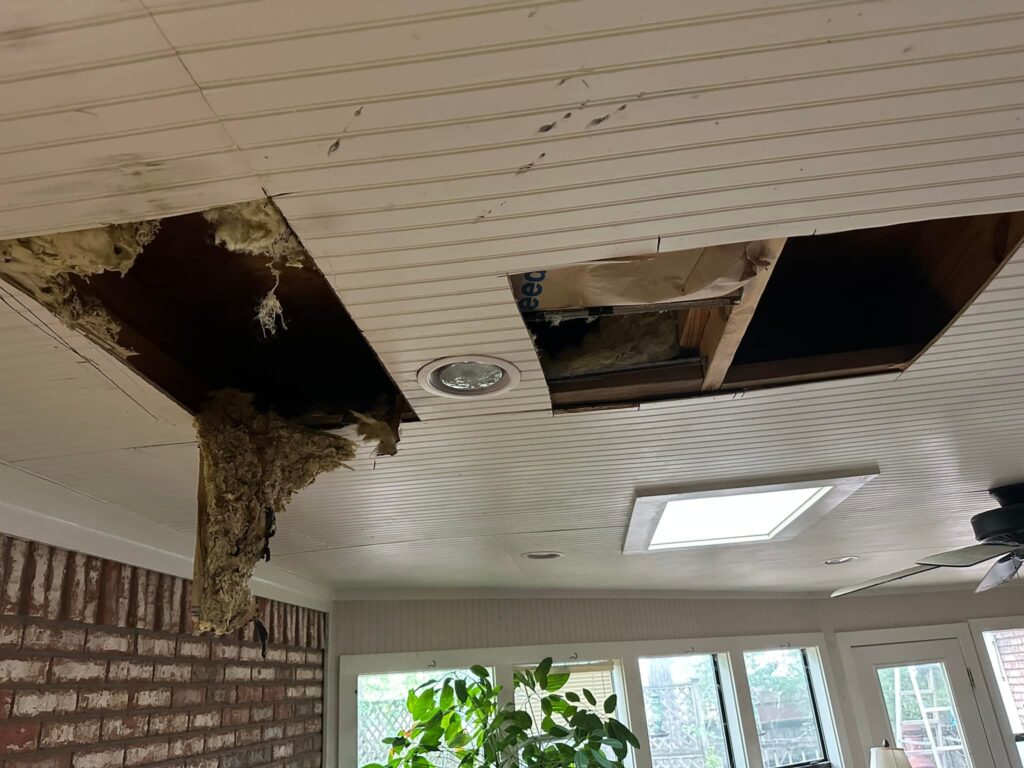
Raccoon Kits


It took over six hours to remove these four kits from the subfloor. Every time we cut they would relocate! In the end, we were able to reunite the mother with her babies for relocation.

Knoxville, Tennessee, is between the Cumberland Plateau and the Great Smoky Mountains. This valley was carved out of the mountains by the running waters of the French Broad River and the Holston River, which converge to form the Tennessee River. Knoxville also has 92 parks within city limits. This combination of water, forested mountains, and parks is a perfect environment for wild animals, including those who pose a nuisance to residents, business owners, and tourists.
Nuisance Wildlife-Human Conflicts in Knoxville, TN
In addition to its landscape, Knoxville has a rich cultural life with museums, restaurants, and clubs. More than 12 million visitors descend on the area annually to enjoy the 500,000 acres of Great Smoky Mountain National Park, the most visited national park in the country. As people encroach upon the habits of the region’s wild animals, these critters travel to seek shelter, food, and water from Knoxville’s residential and commercial neighborhoods.
Key Wildlife Behaviors Influenced by Eastern Tennessee Climate
Knoxville, Tennessee, is located in a region with a humid subtropical climate, characterized by four distinct seasons. This climate significantly impacts wildlife behavior in the area.
- Foraging Patterns: Seasonal changes dictate foraging behavior, with heightened activity in spring and fall.
- Nesting and Breeding: The predictable seasons encourage specific breeding cycles. For example, raccoons and opossums often have young in early spring or late summer.
- Migration and Hibernation: Many birds migrate southward in the fall, while some mammals hibernate or become less active in winter.
Homeowners may experience nuisance wildlife issues during seasonal transitions, especially as animals seek shelter or food.
Spring
Temperatures are mild ranging from 40°F to 70°F. Animals like birds, squirrels, and raccoons become more active as food sources such as insects, fruits, and nuts increase. This is also a key breeding season for many species. Increased activity can lead to encounters with humans, including nesting in homes or buildings.
Summer
Temperatures can get hot typically ranging from 70°F to 90°F, with high humidity. Raccoons and squirrels will leave attics because of the heat. Bats however thrive in the hot temperatures in an attic. Maternity colonies will roost in attic, walls, and under the roof. Increased insect activity (mosquitoes, wasps, etc.), and the heat may drive animals to seek shelter indoors for cooler environments.
Fall
Temperatures are cooling and many animals prepare for winter. Very few nuisance wildlife will hibernate so mammals like squirrels storing food and migratory birds passing through. Rats and mice are active year-round. They’re always looking for food sources and safe places for shelter. This need intensifies with the cold winters in the Appalachians.
Winter
Rodents, squirrels, raccoons, opossums, and skunks do not hibernate. Some critters might slow down during the winter, but they still can be a problem. Groundhogs and (some) bats are the only true hibernators that cause homeowners problems.
Wildlife Damage in Knoxville

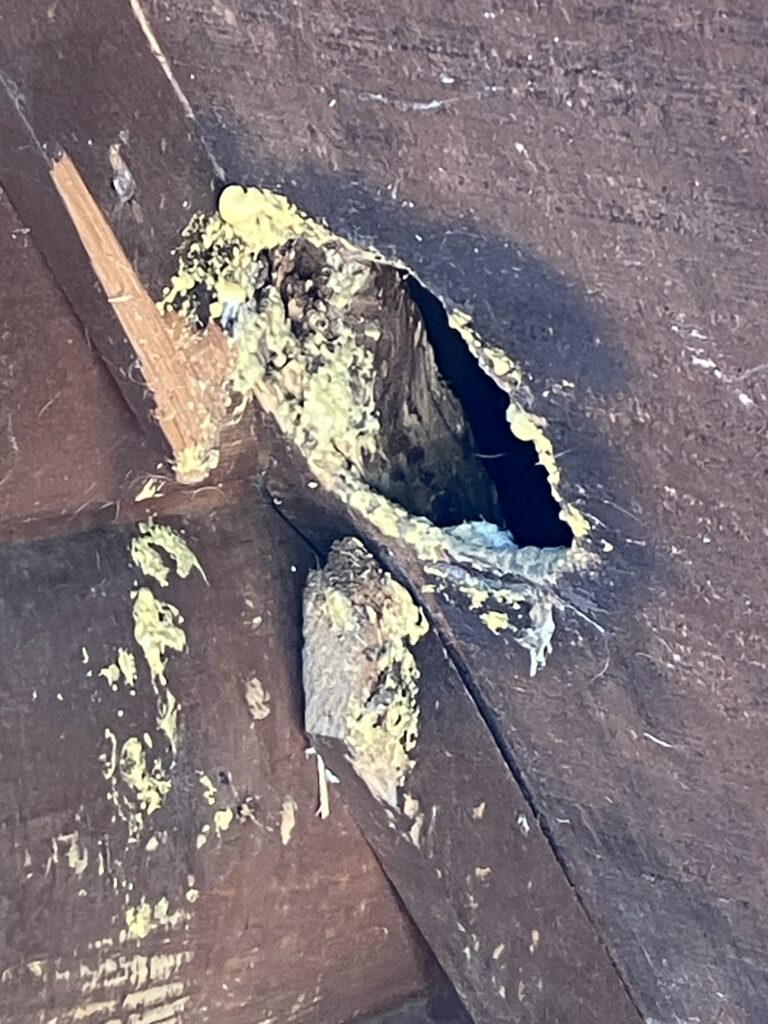
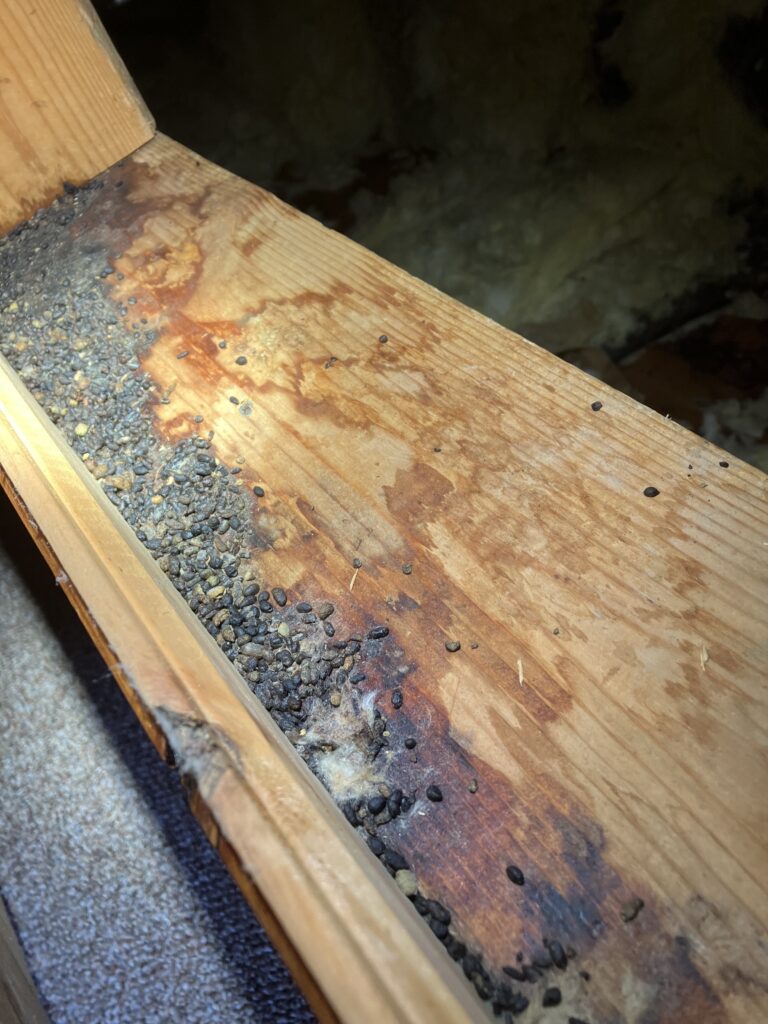
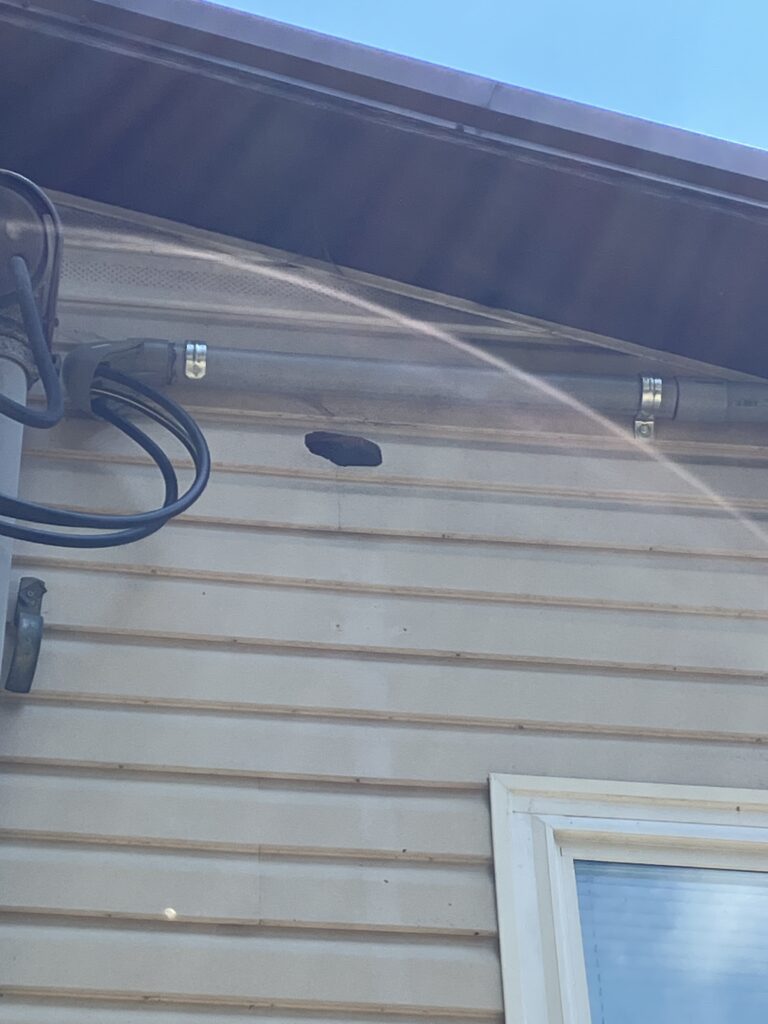
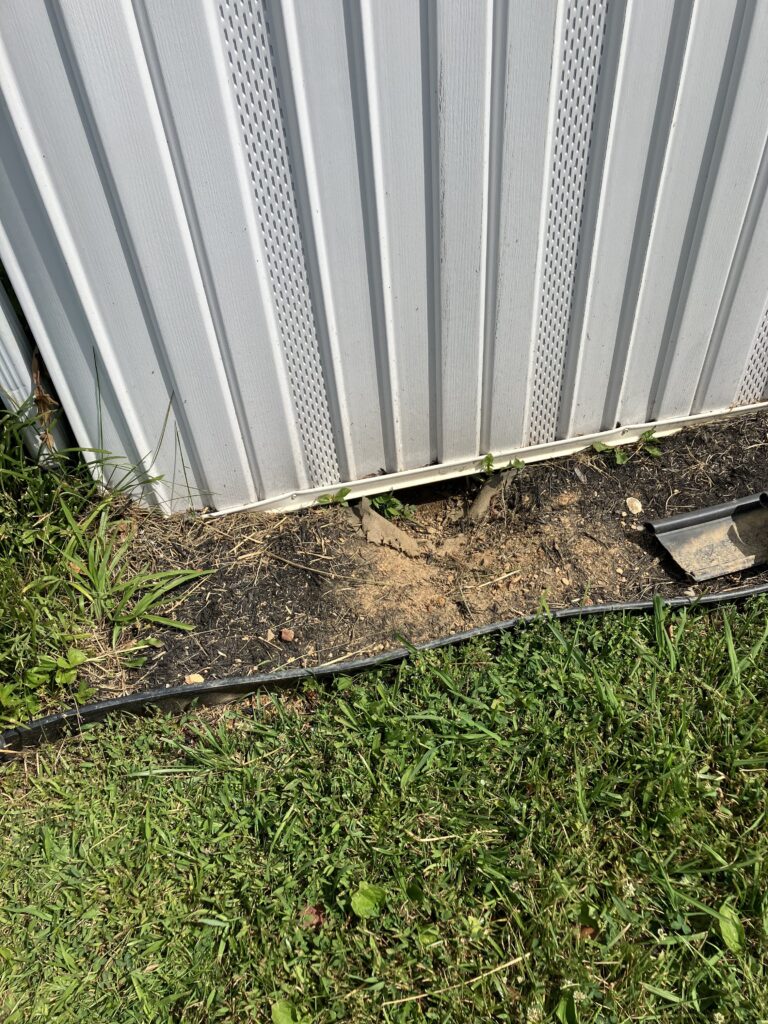
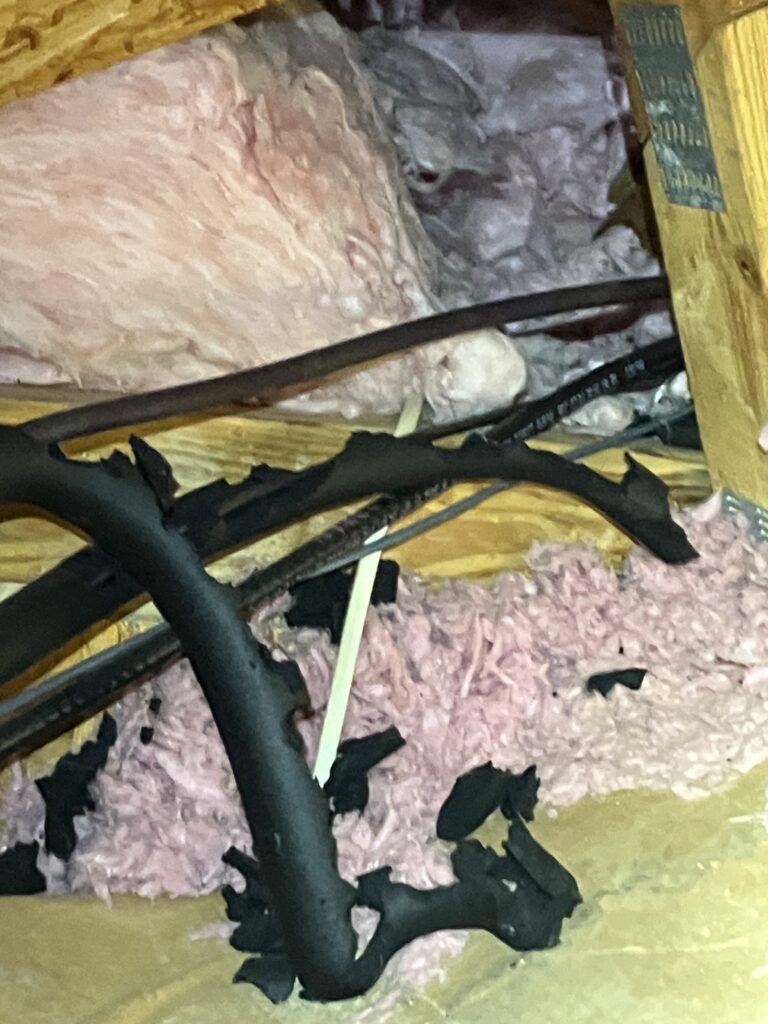
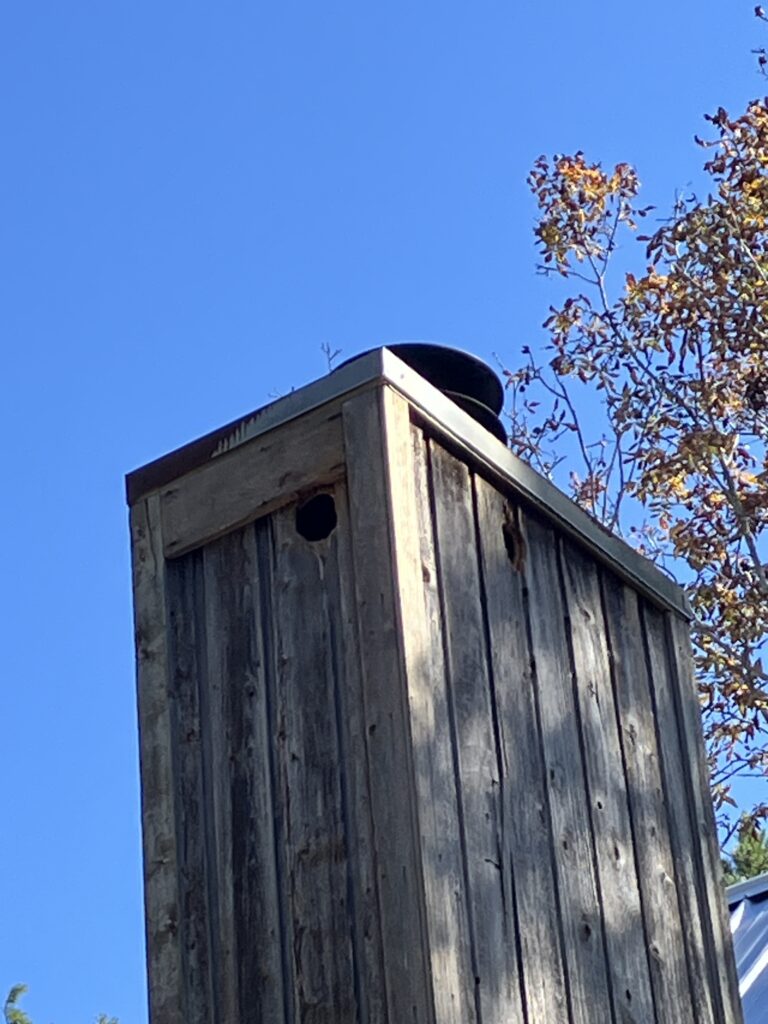
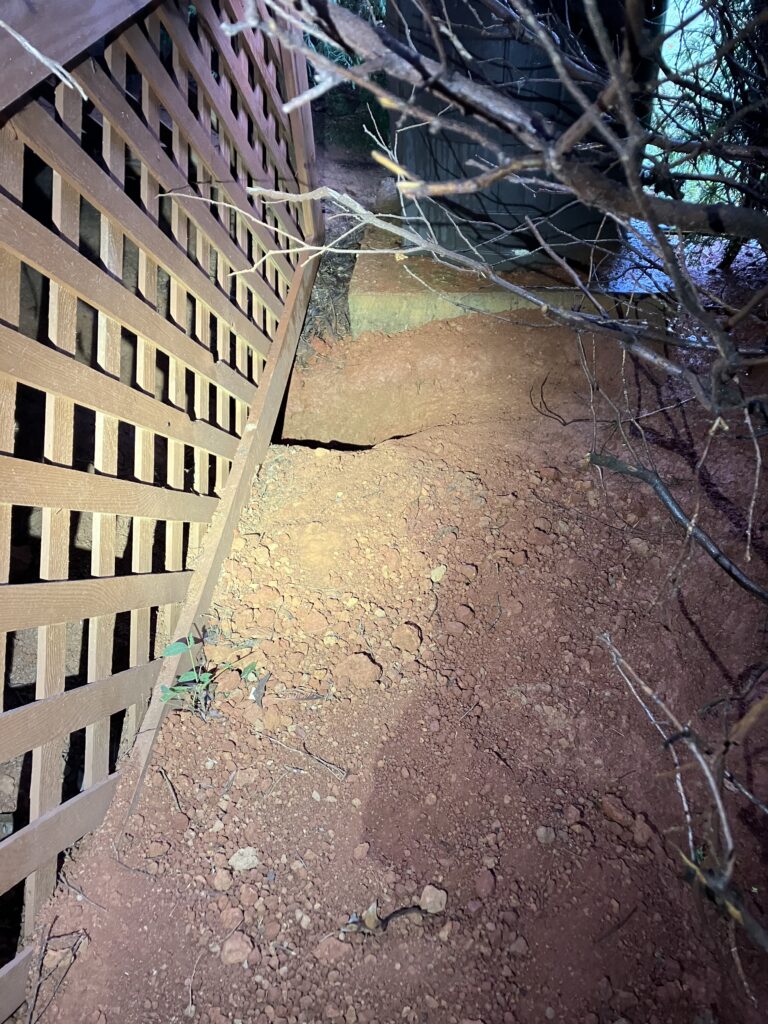
Nuisance Wildlife in Knoxville
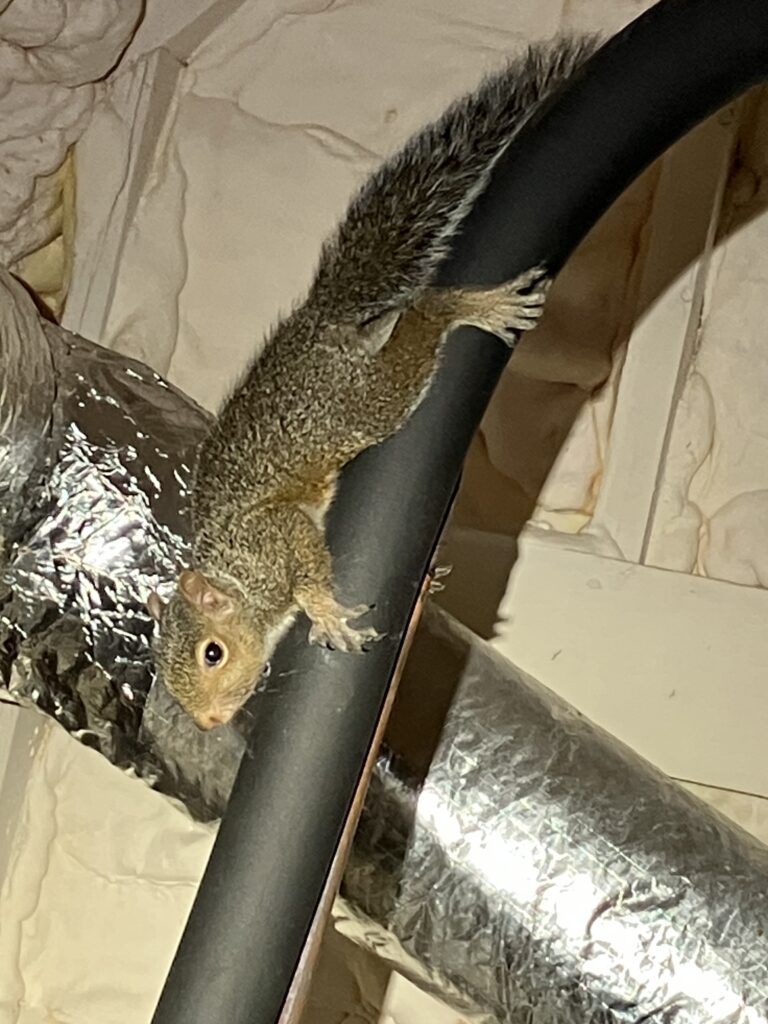
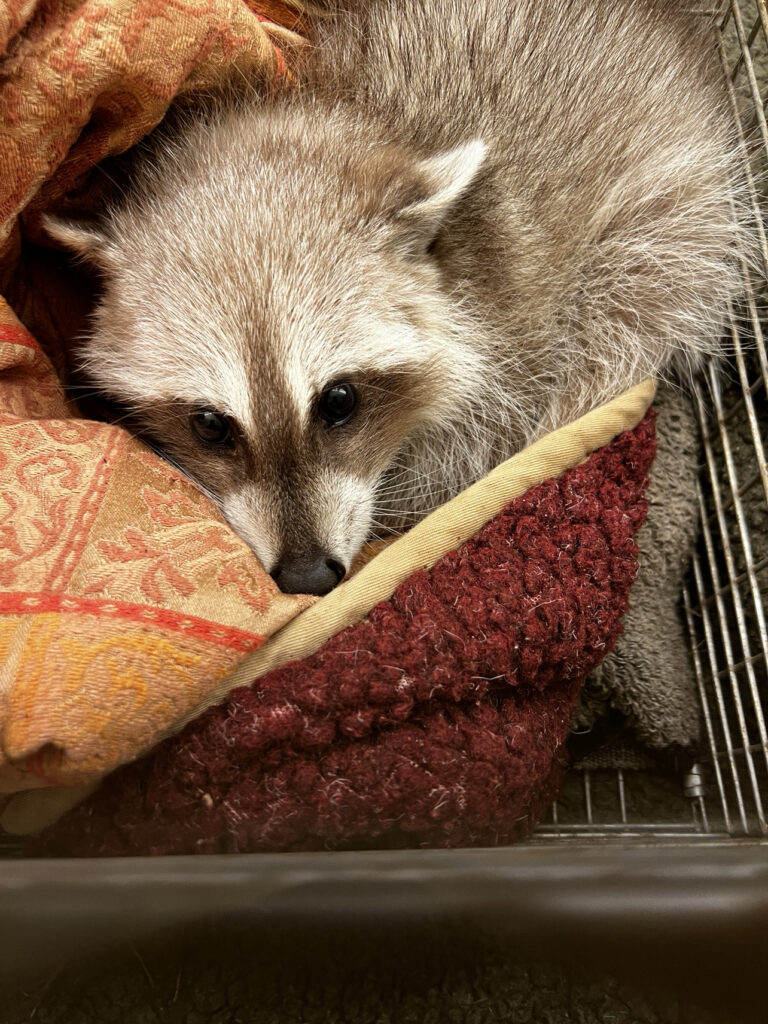
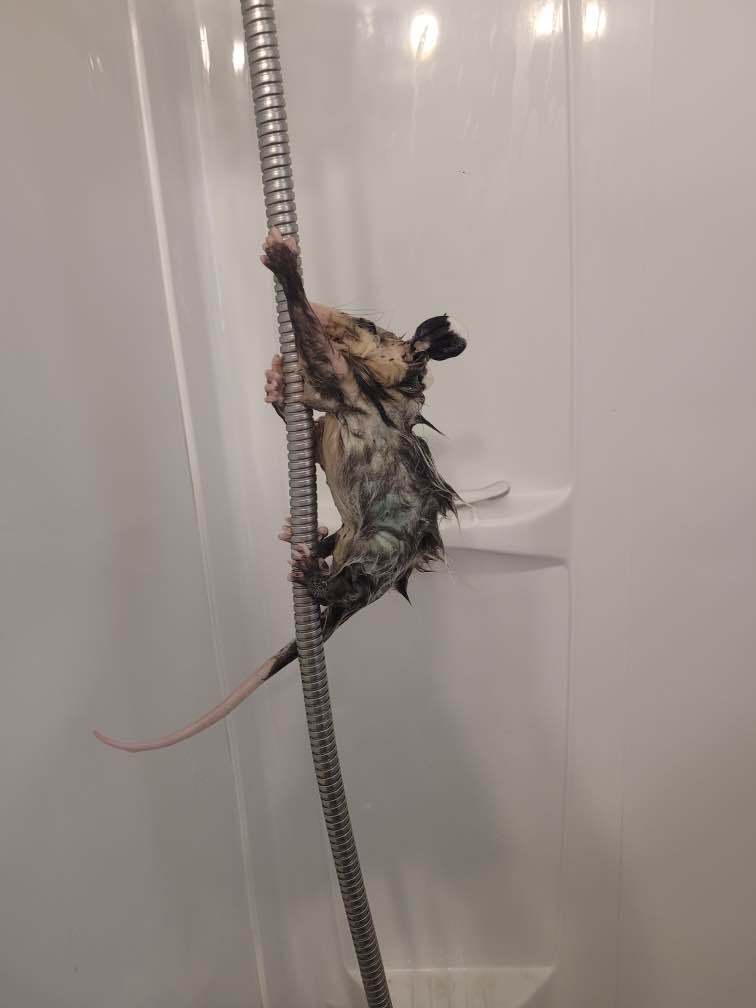
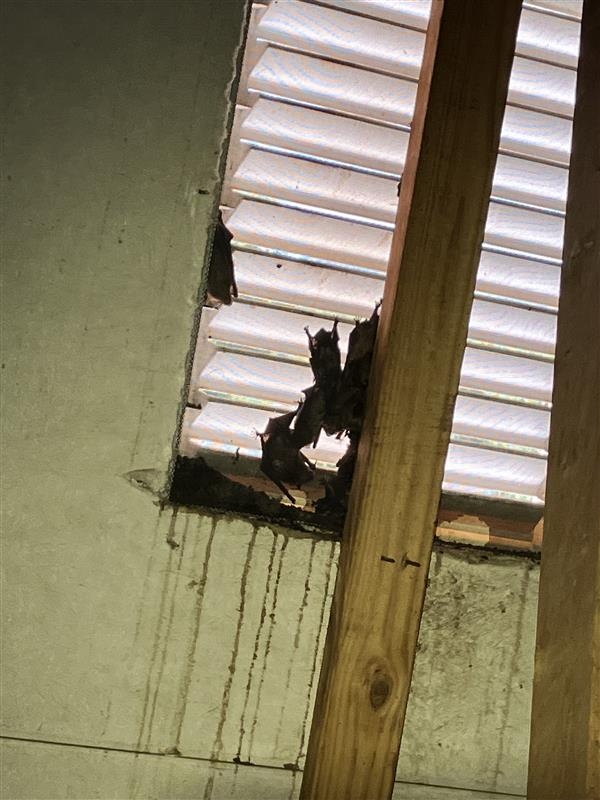
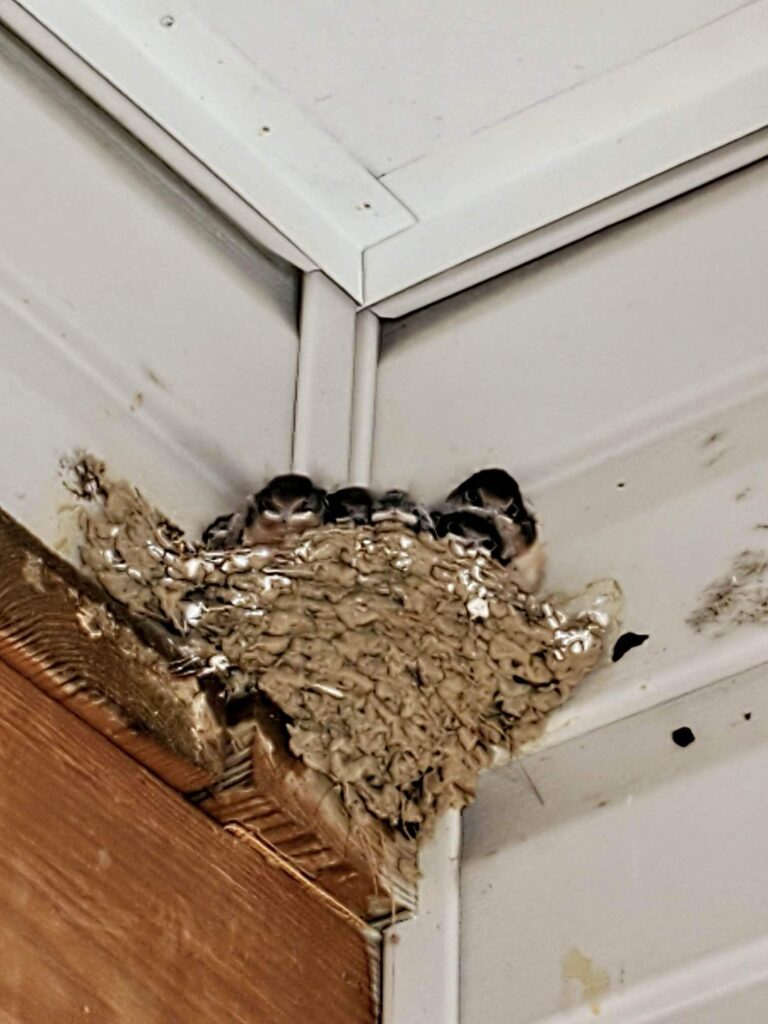
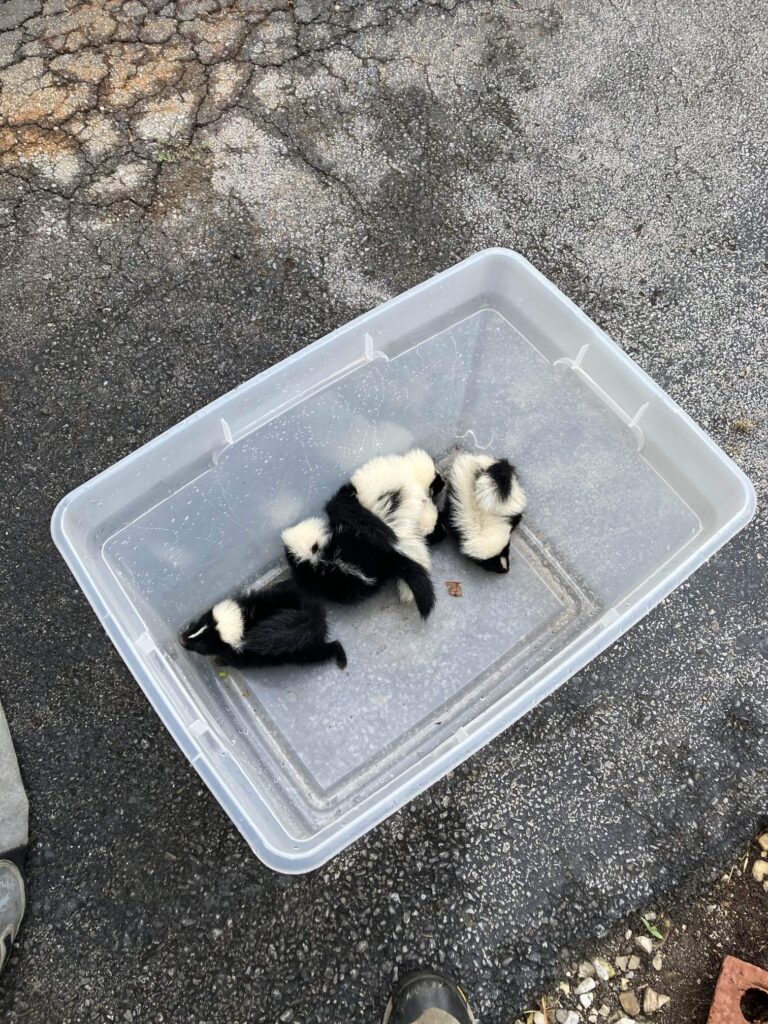
Mouse in Basement
How Do Animals Get Inside Gulf Coast, FL Homes?


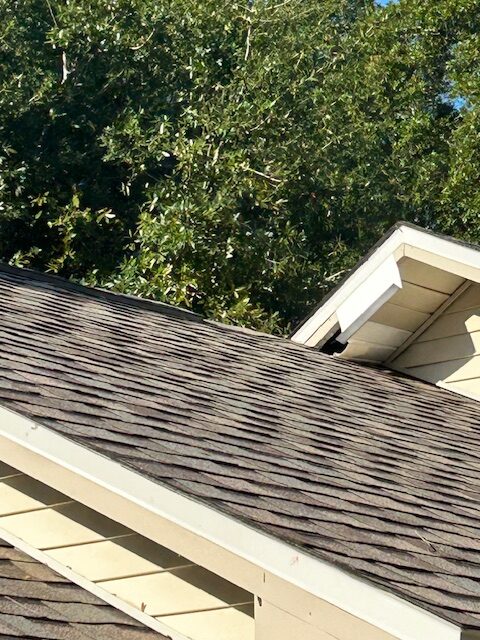



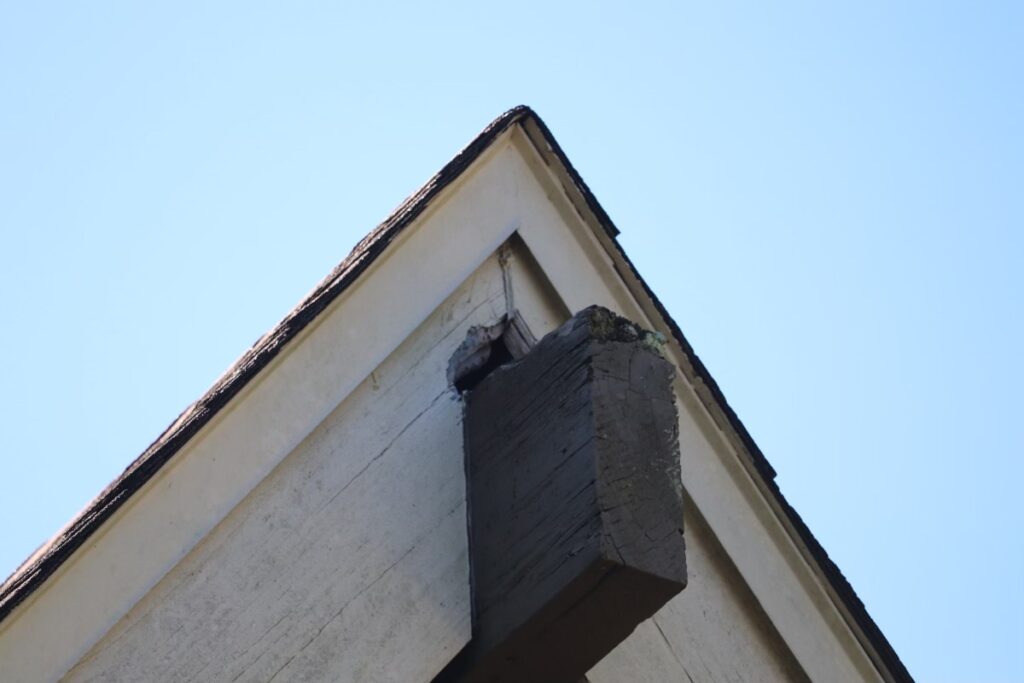


Raccoons in Gulf Coast, FL


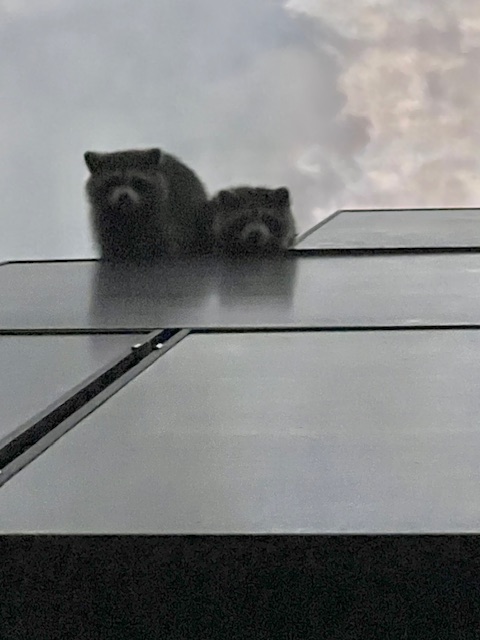
Gulf Coast Animals in Attic Damage
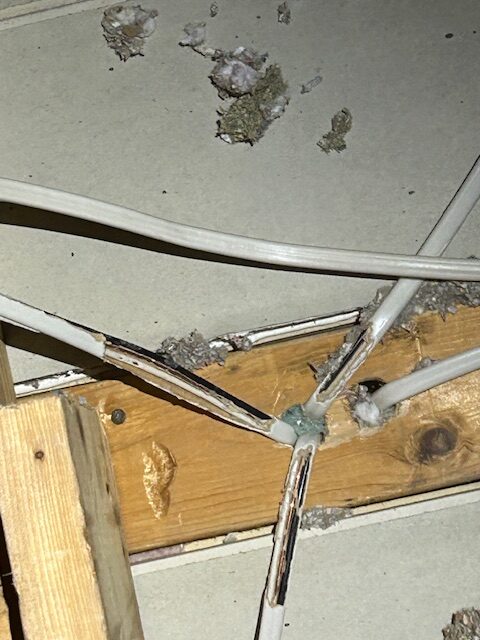


Armadillo Trapping
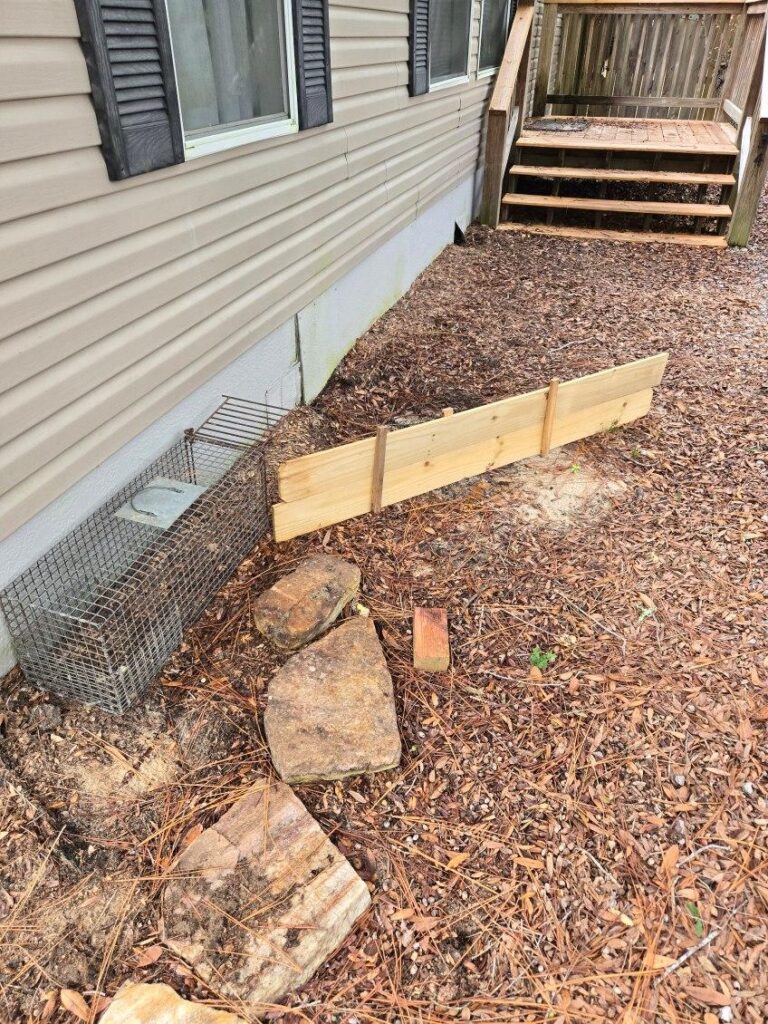
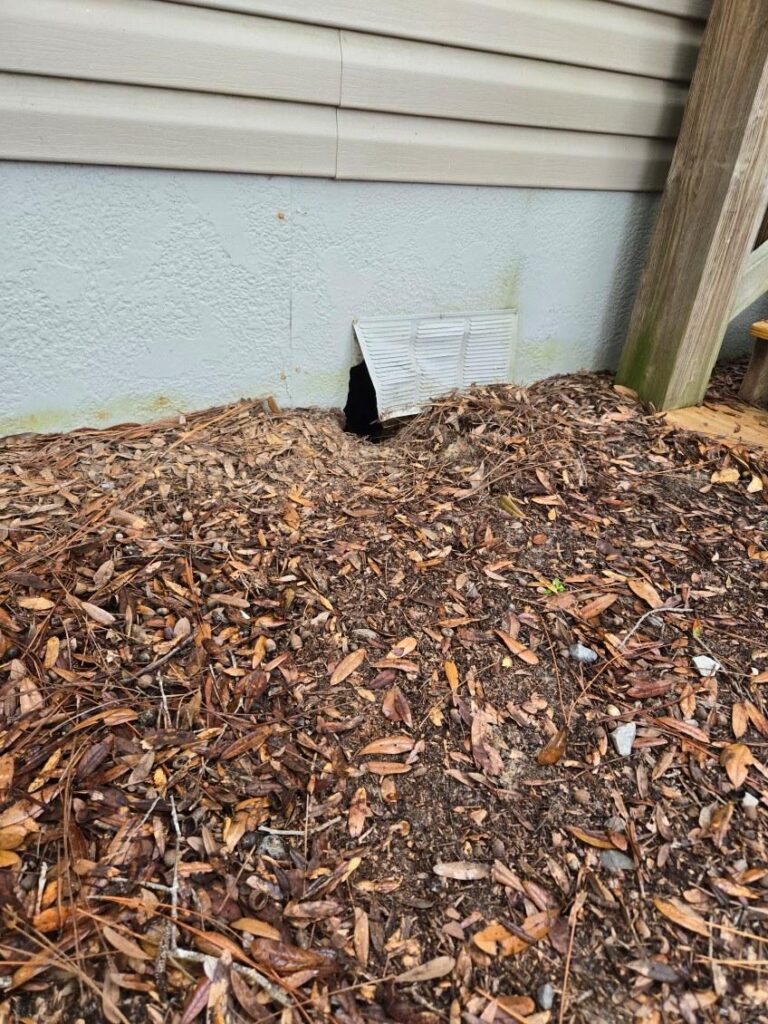
Louisiana has the perfect weather for wildlife, with high humidity and more hot days than cold. Swamps, the Mississippi River, lakes, ponds, and creeks keep our wildlife thriving. The problem is that the more we develop New Orleans, Baton Rouge, and other cities, the fewer “wild” places animals have to live. So, they started searching for shelter in our neighborhoods. Louisiana considers wildlife a nuisance when they persistently annoy or threaten property owners or if they cause property damage.
Here are some photos I took from the field.
Raccoons Inside the Home
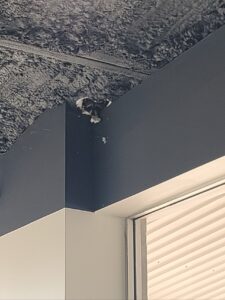
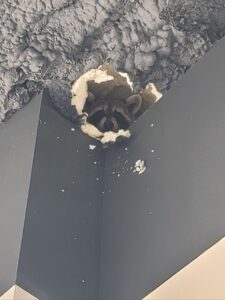
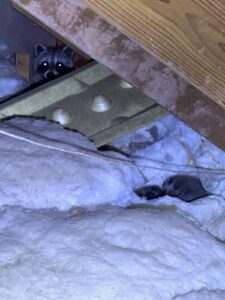
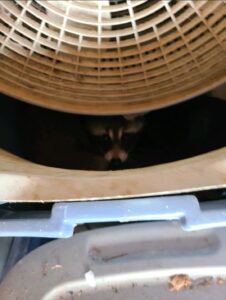
Raccoons on the Roof

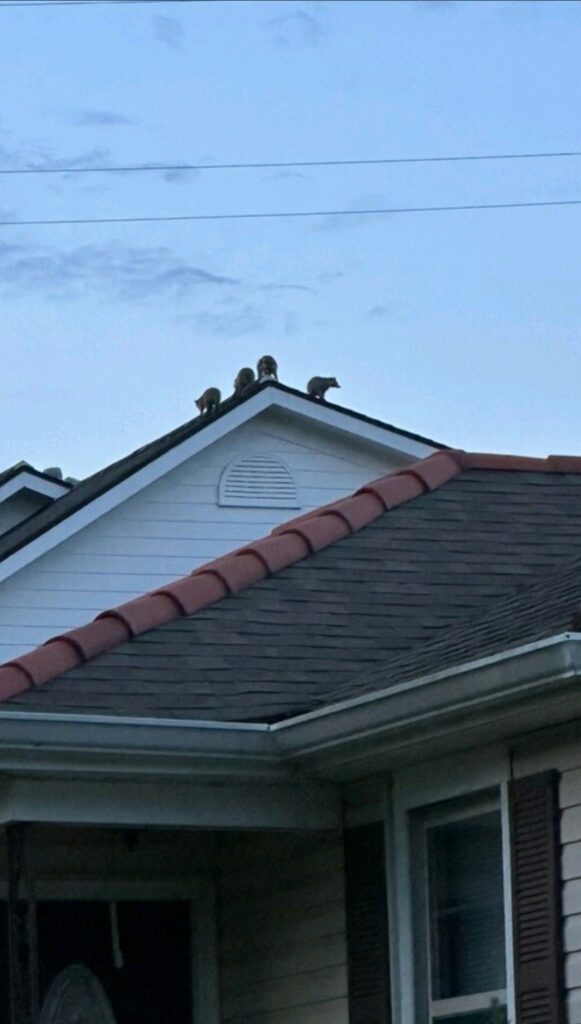

Raccoons in Yard
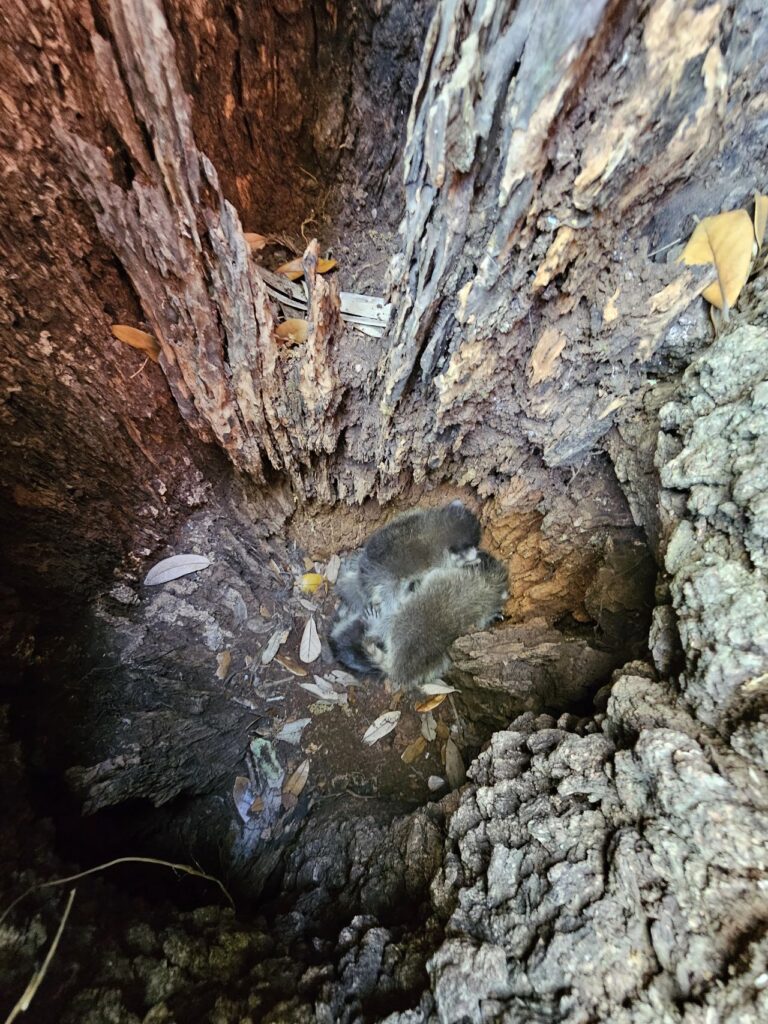
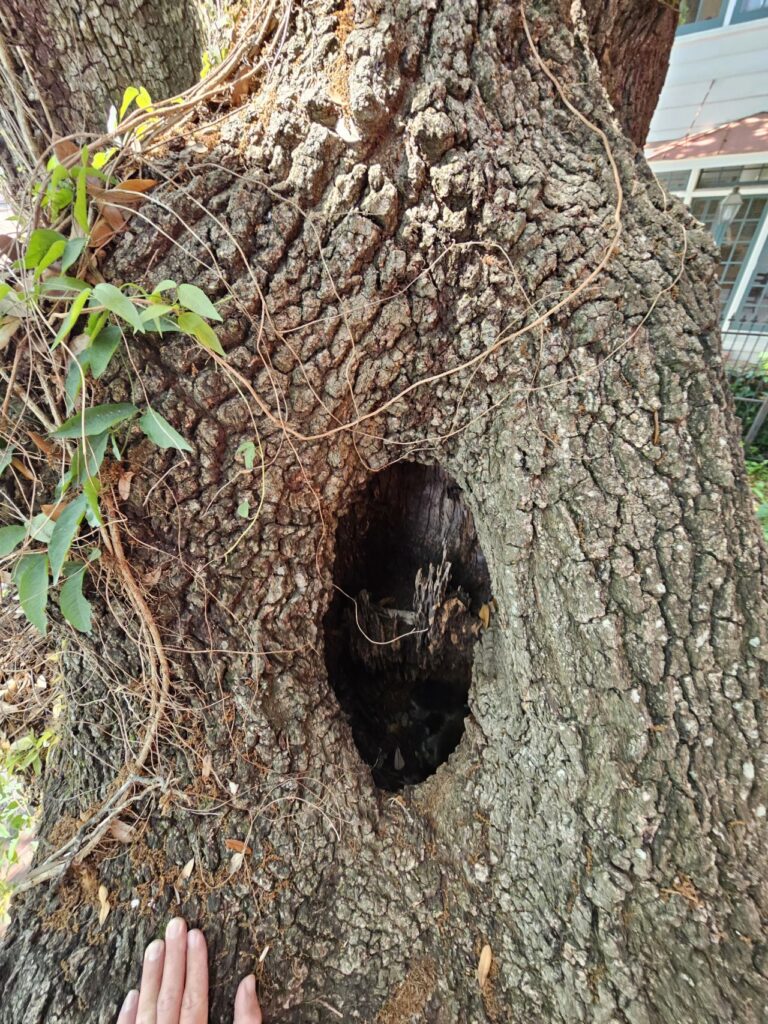
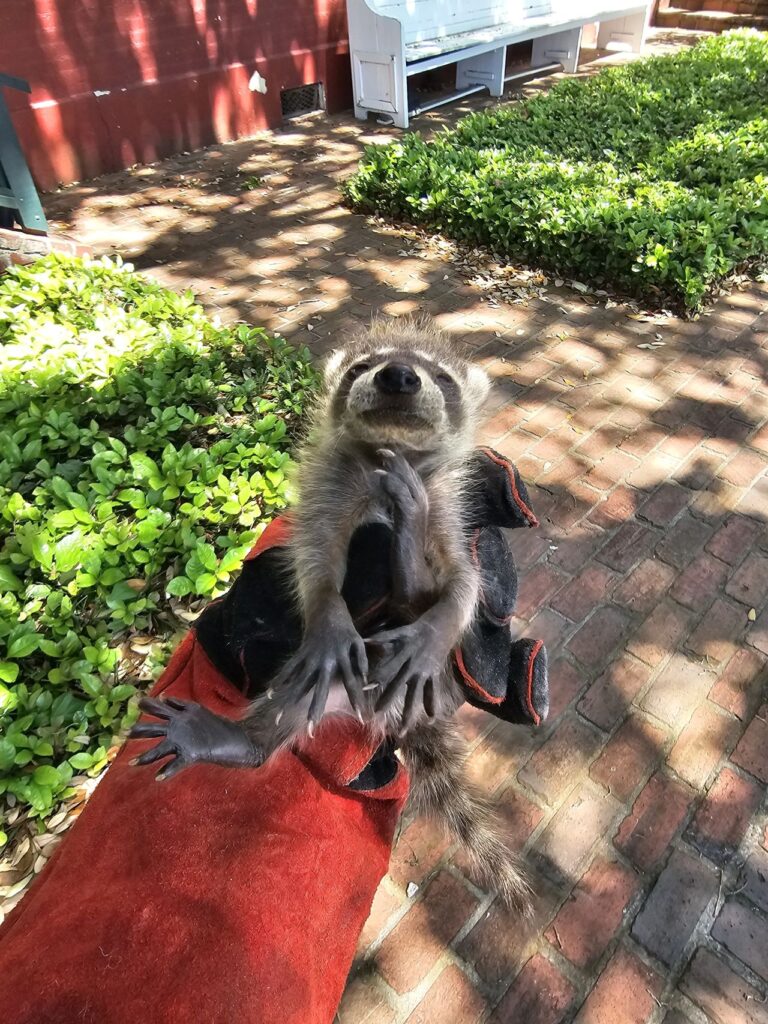
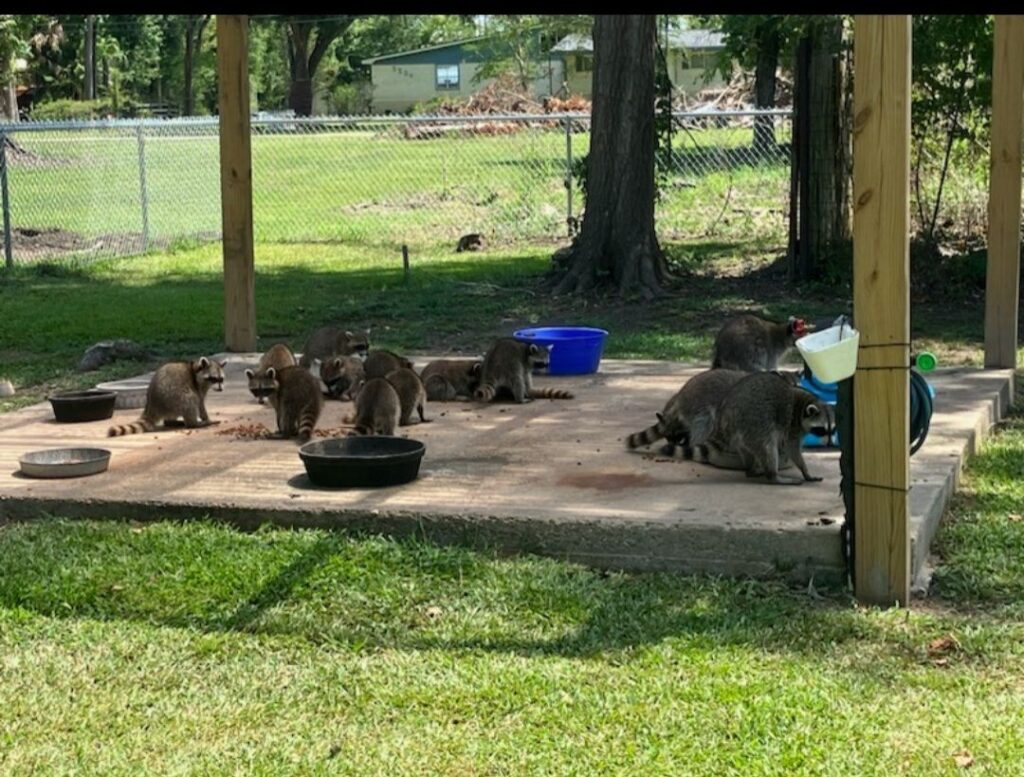
Squirrels in New Orleans and Baton Rouge



Juvenile Wildlife Removal


Opposums and Armadillos
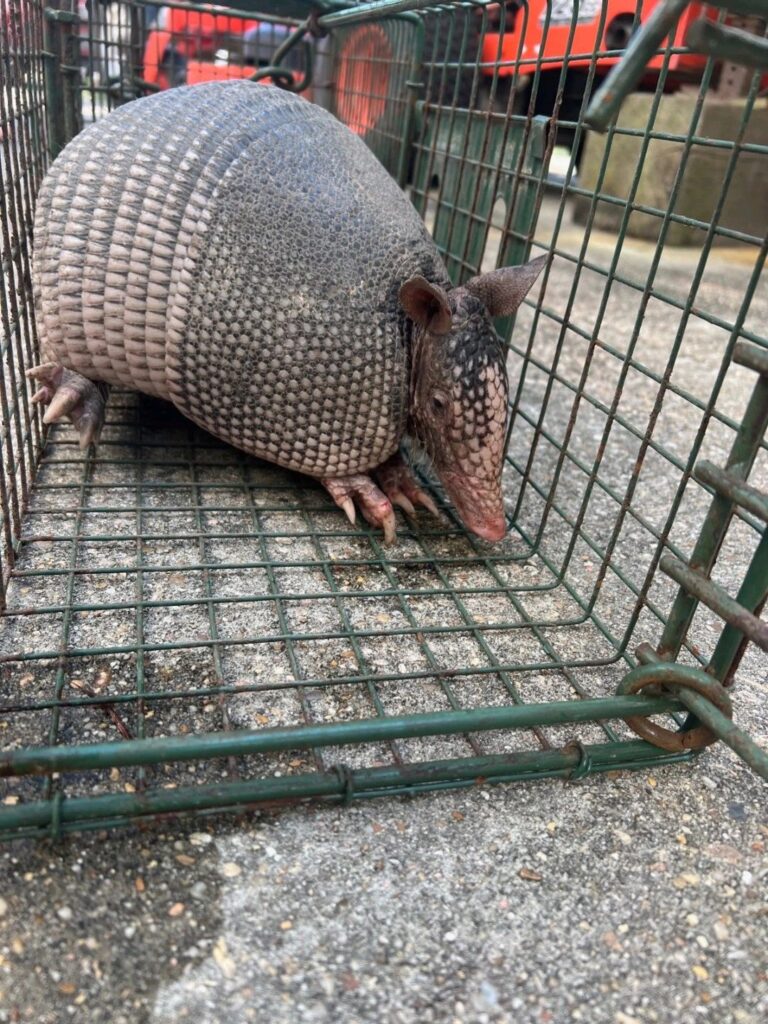

Stinging Insect Control & Beehive Removal





Critter Control in Louisiana Staff Photos





All photos were provided by Brett Vreeland, district manager in Louisiana.